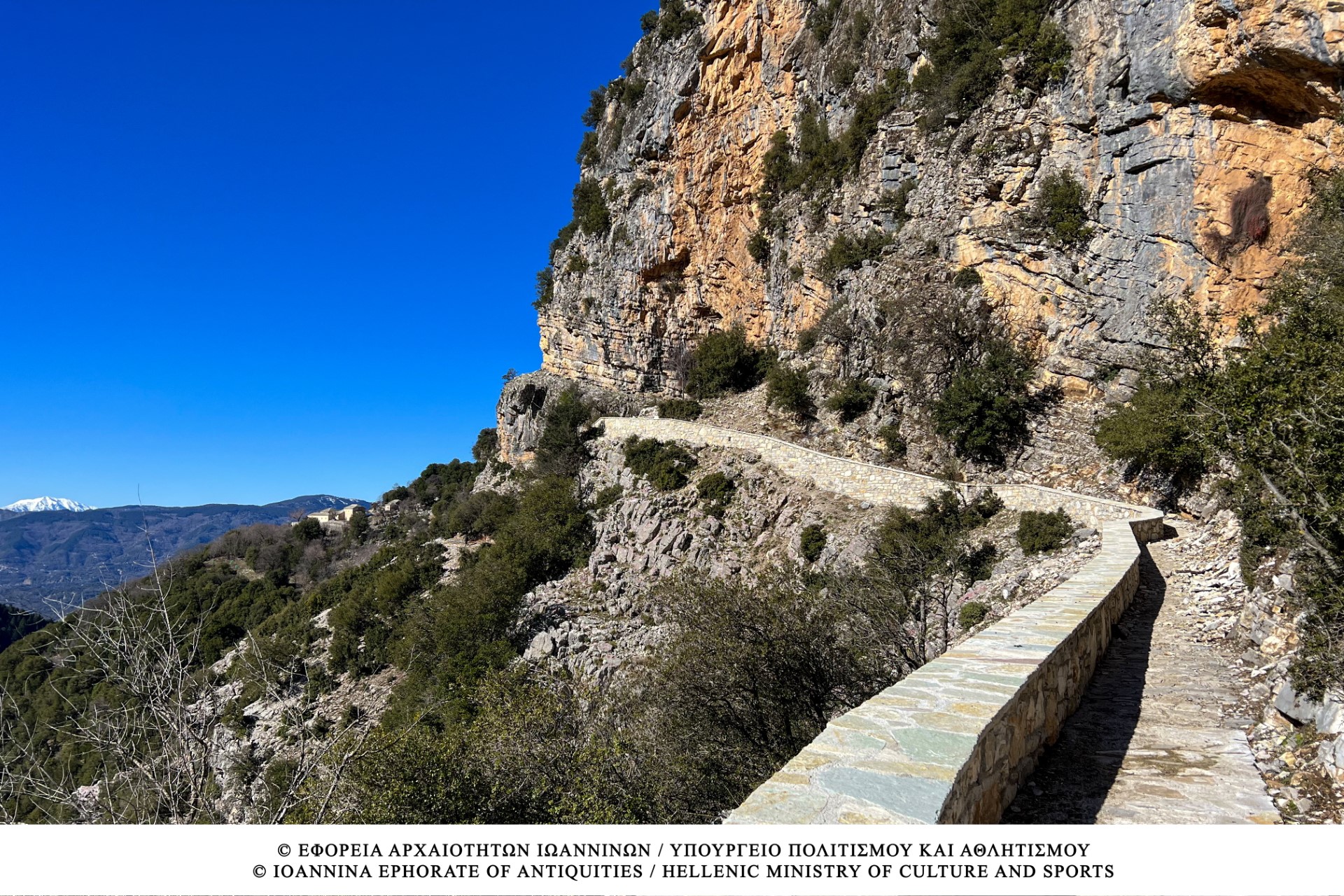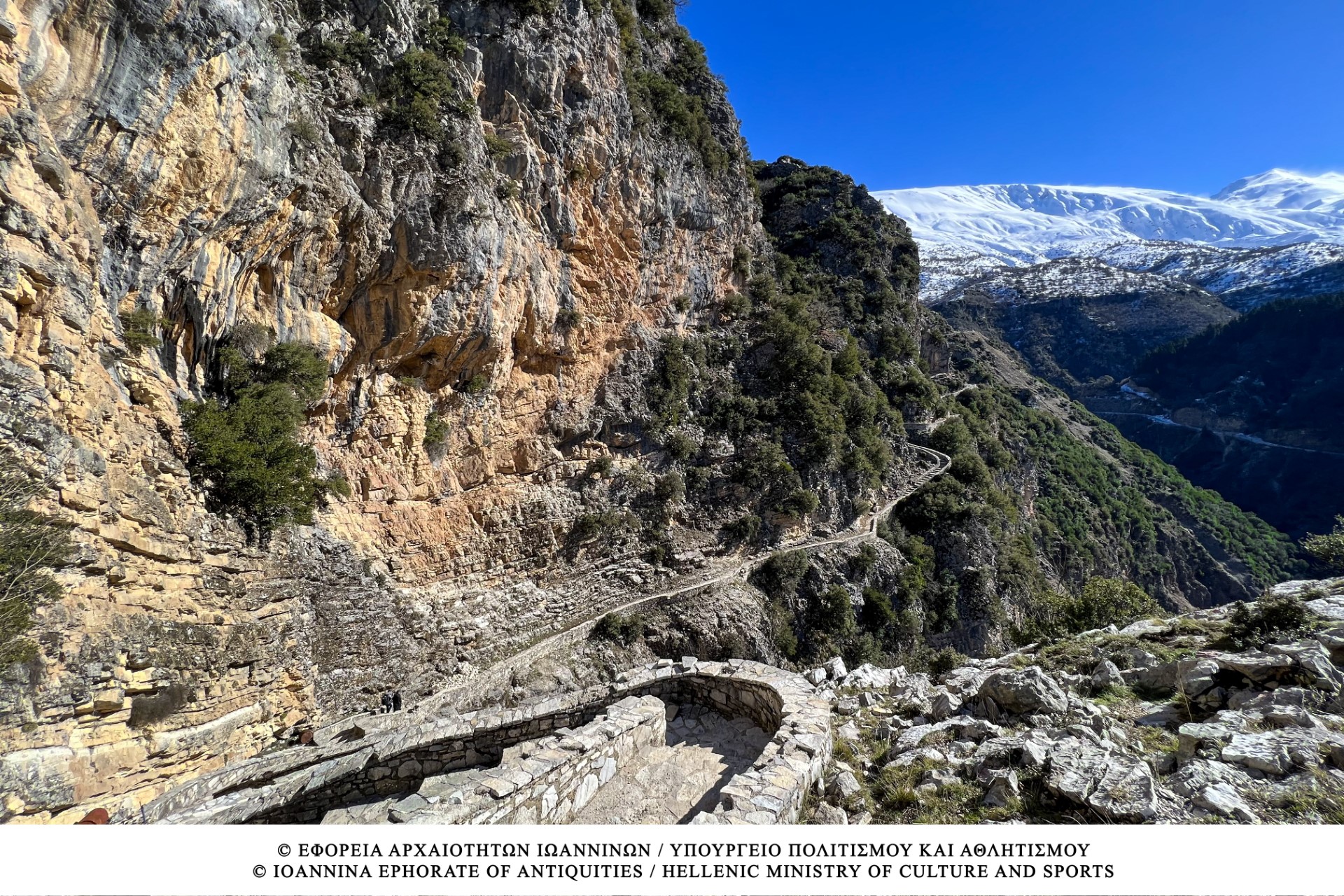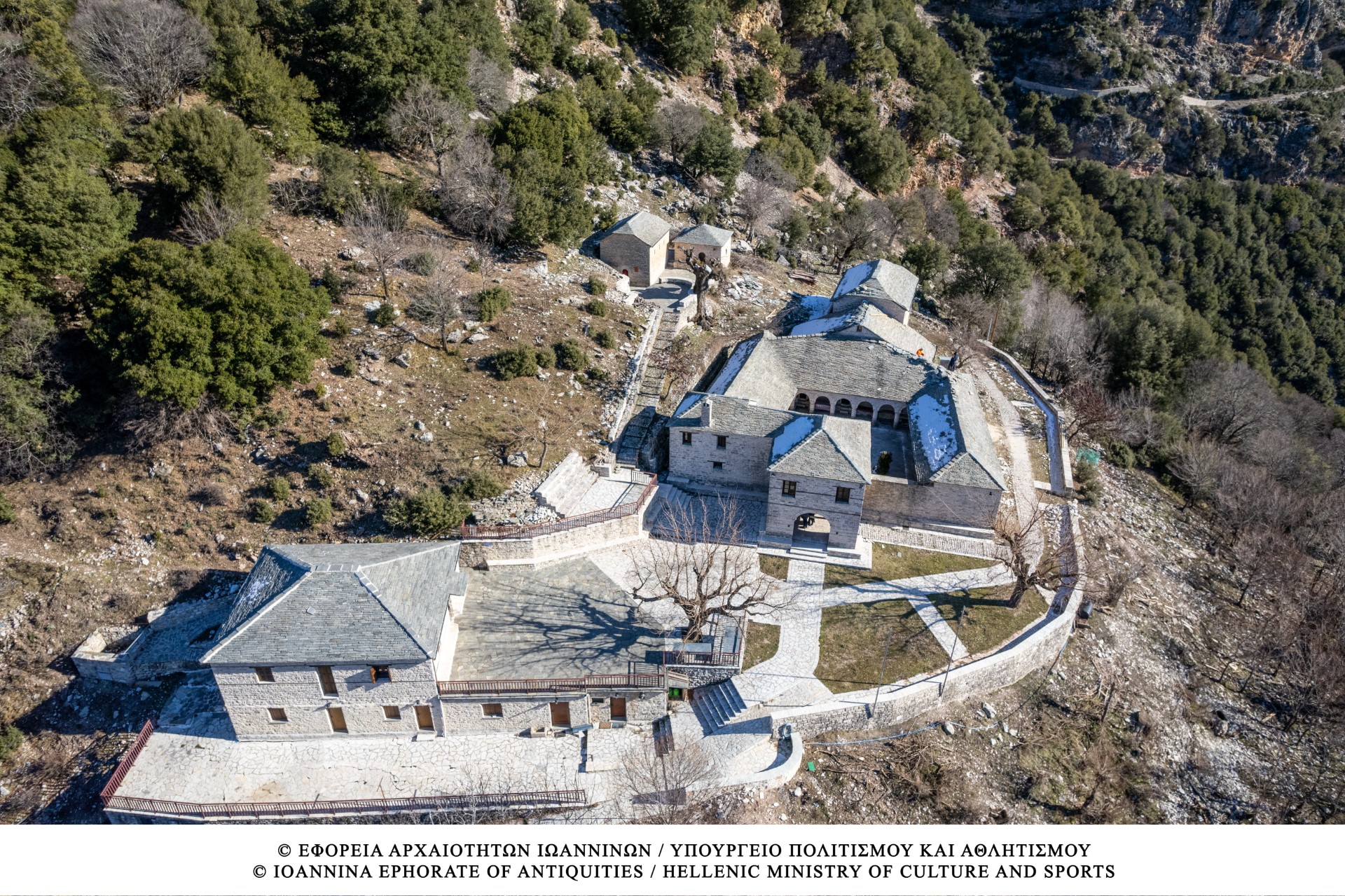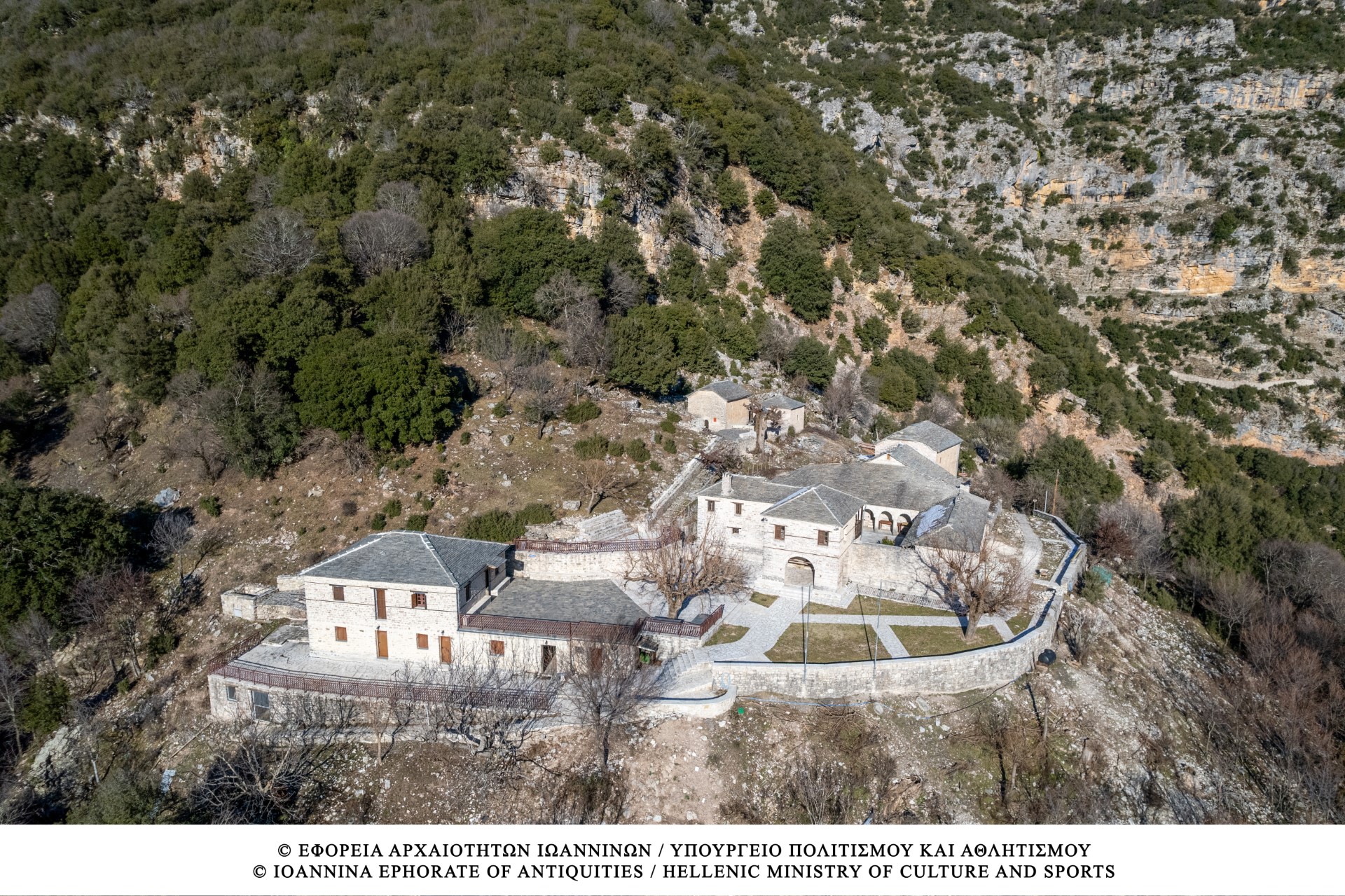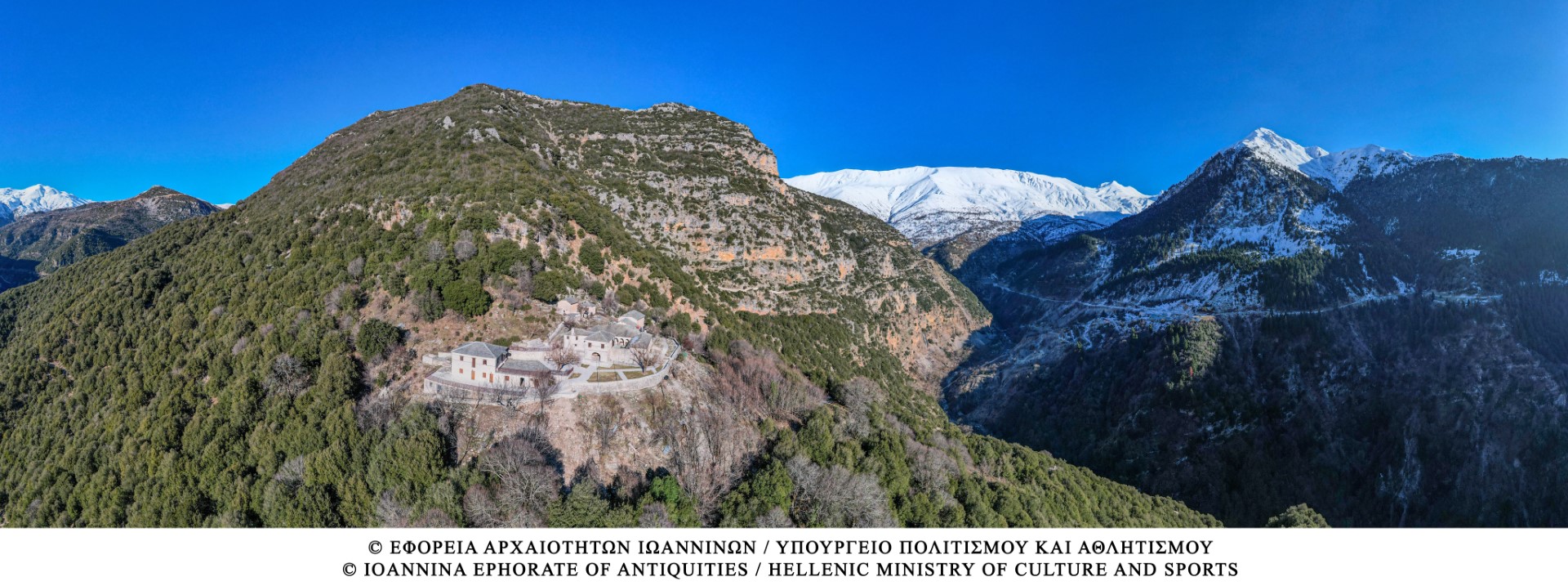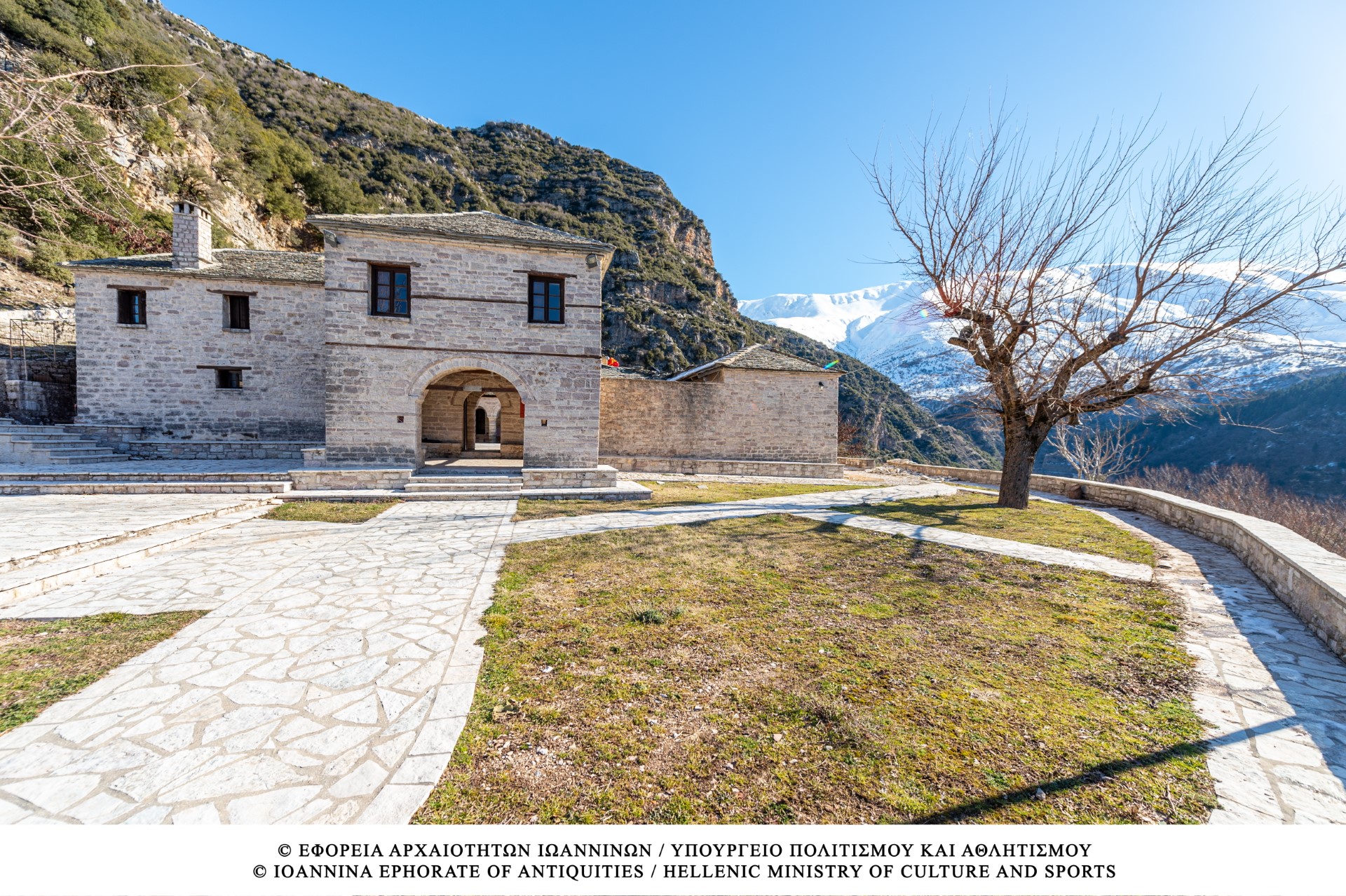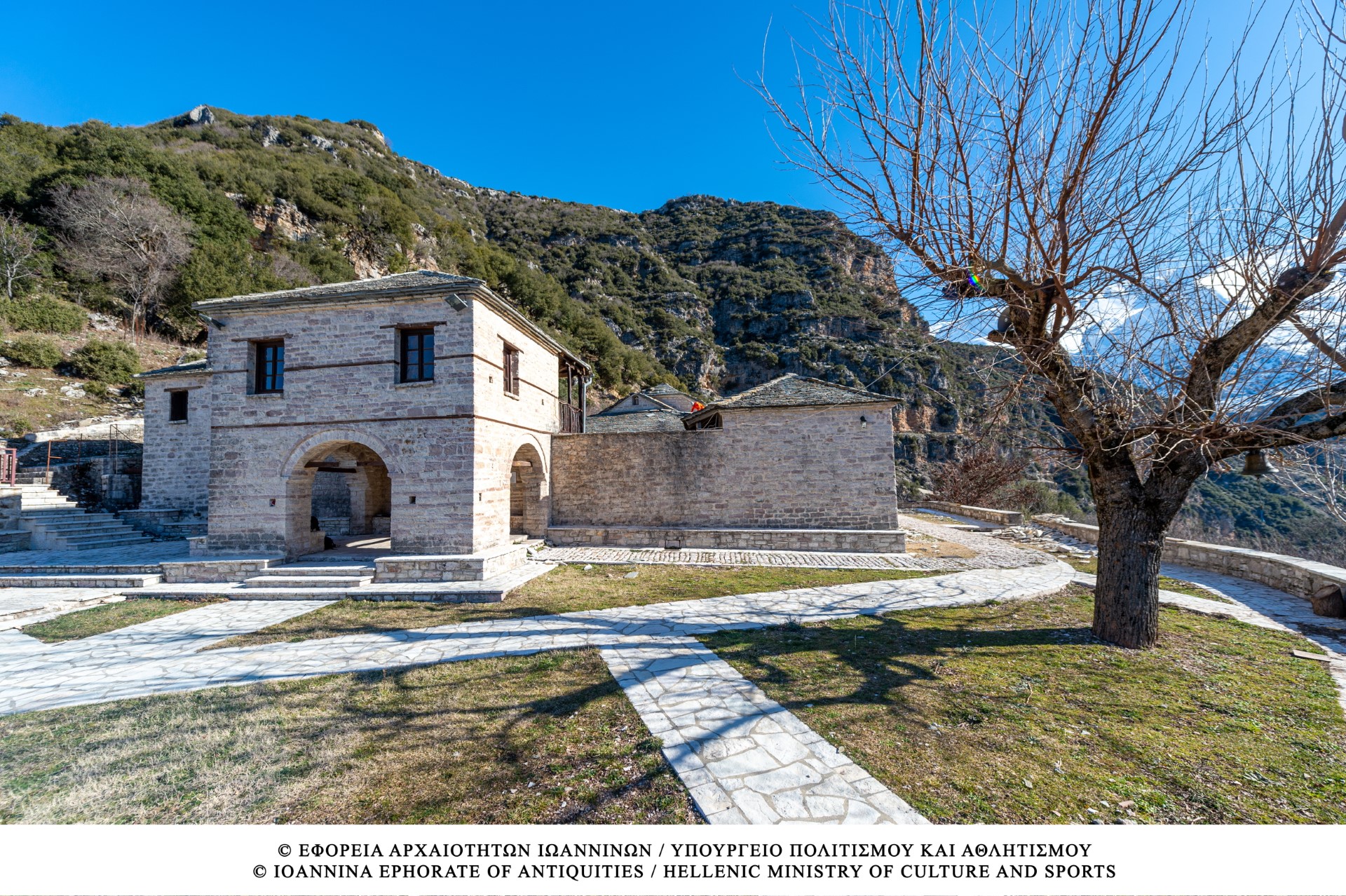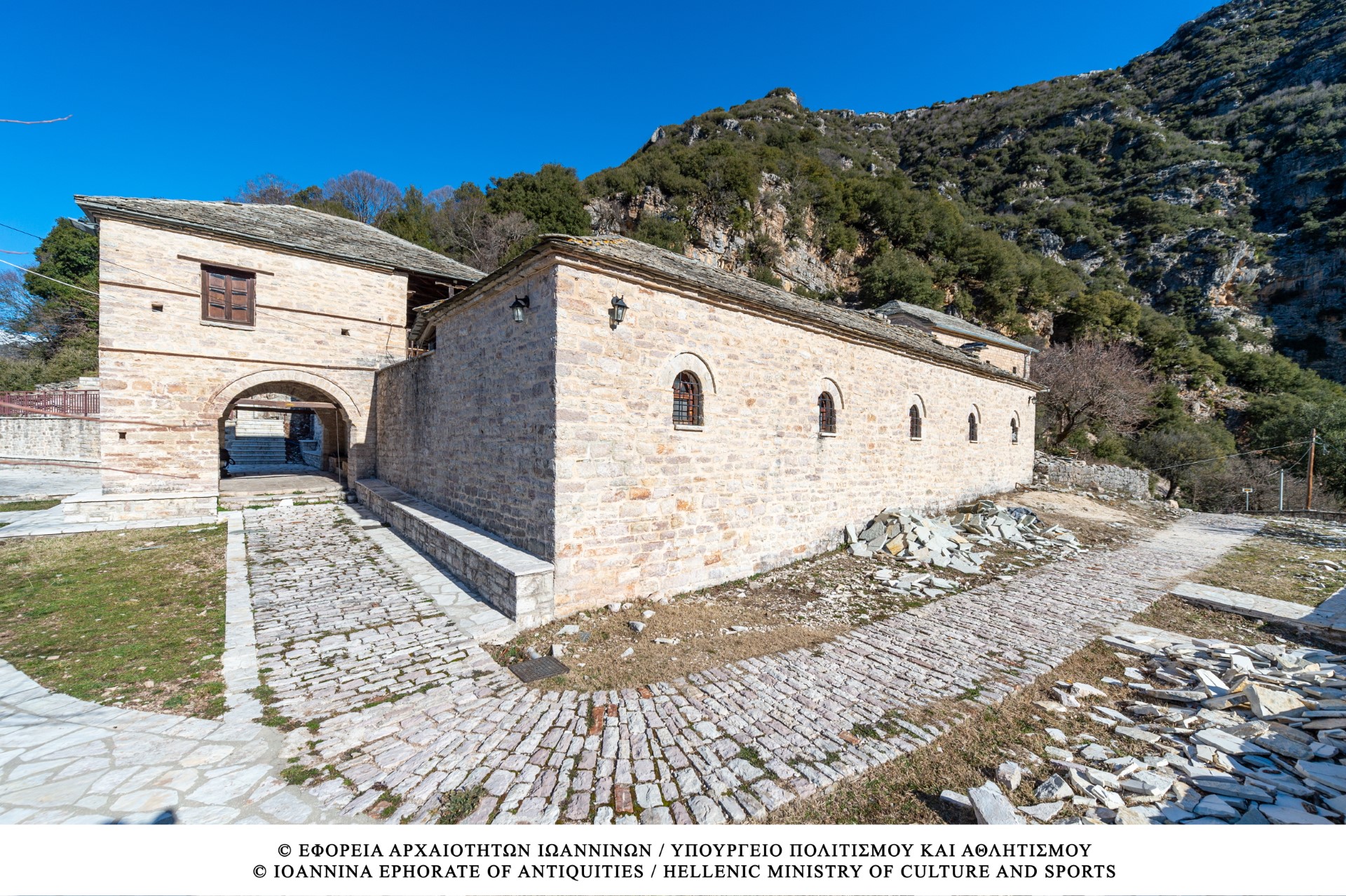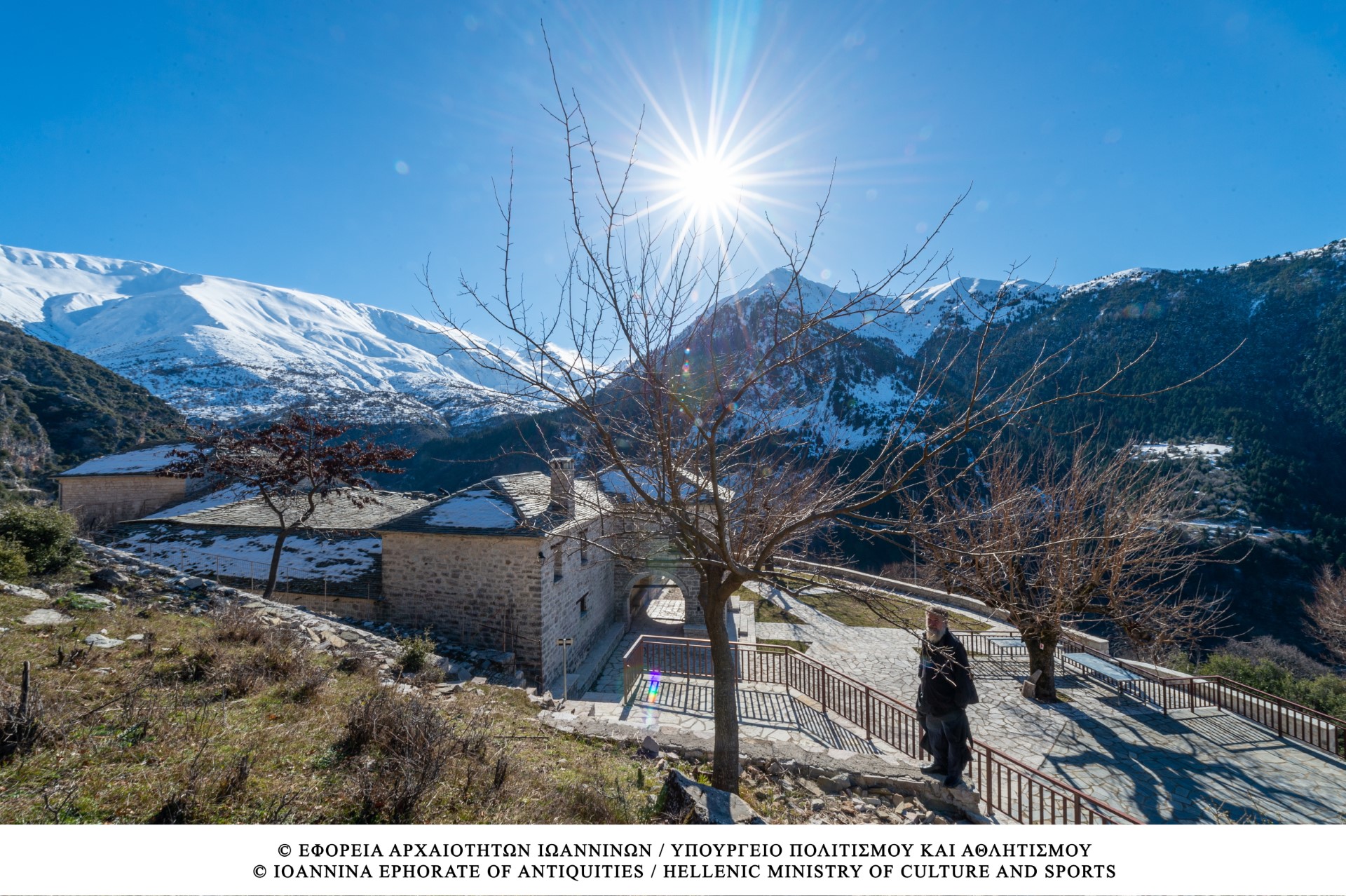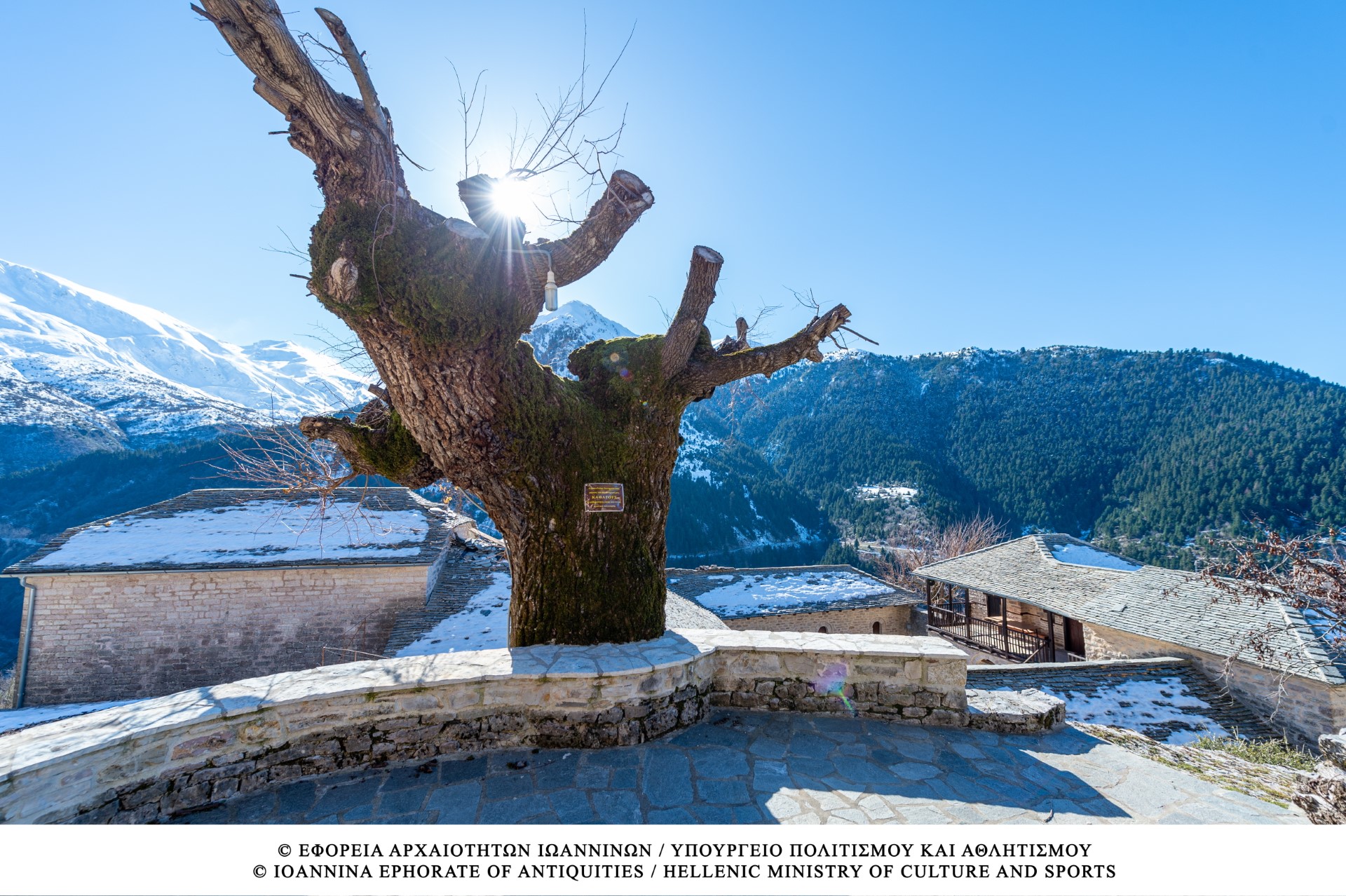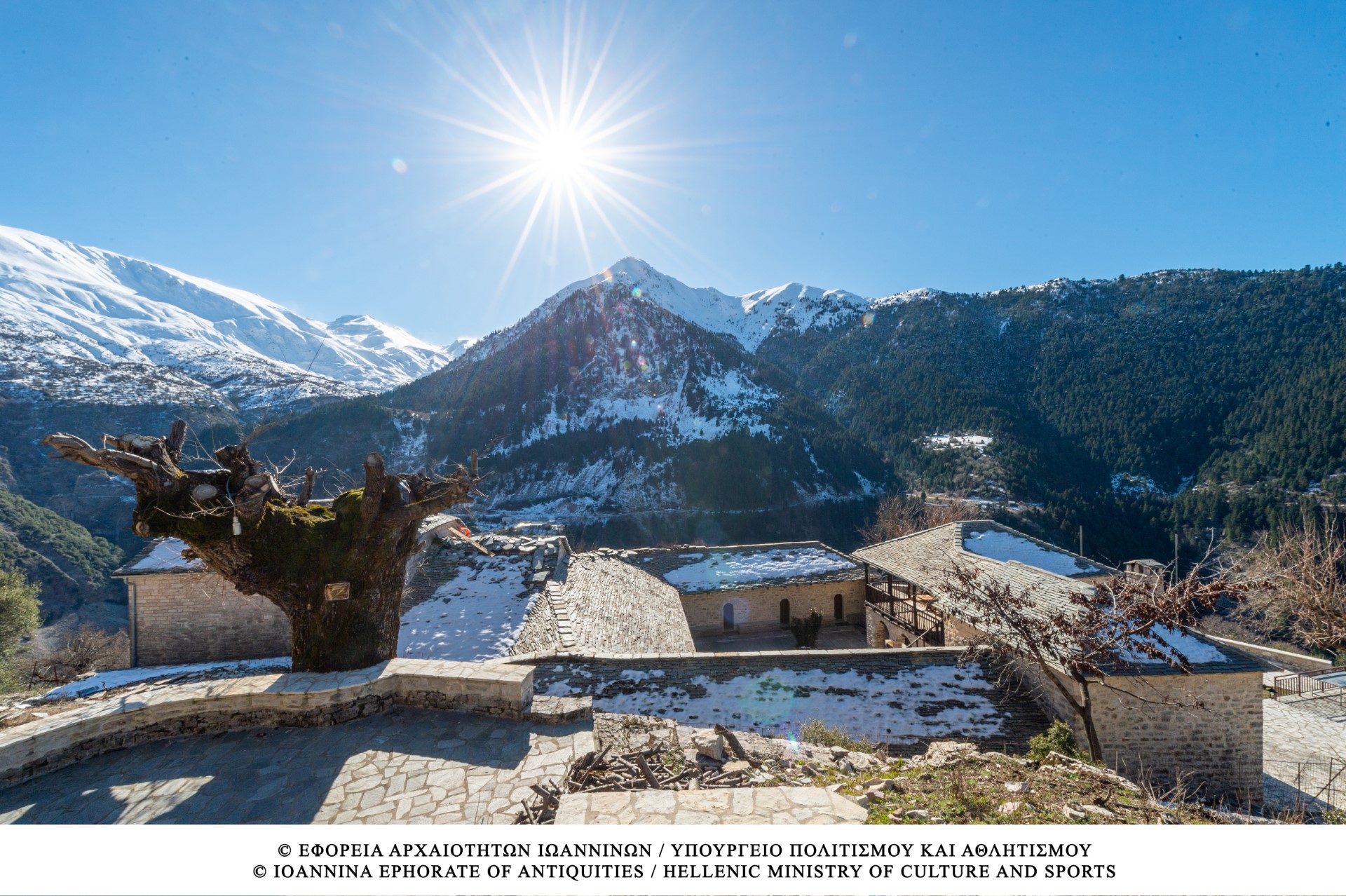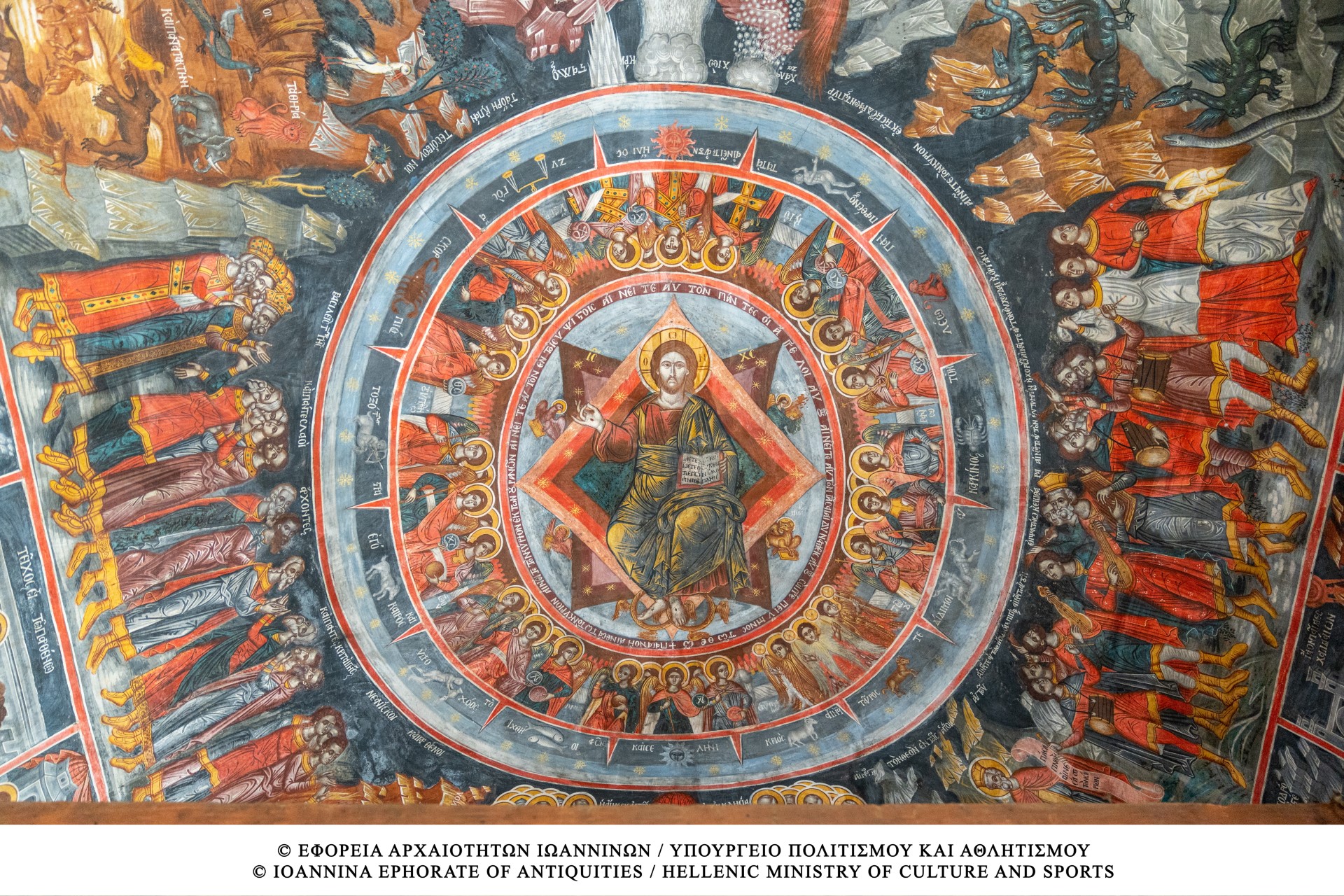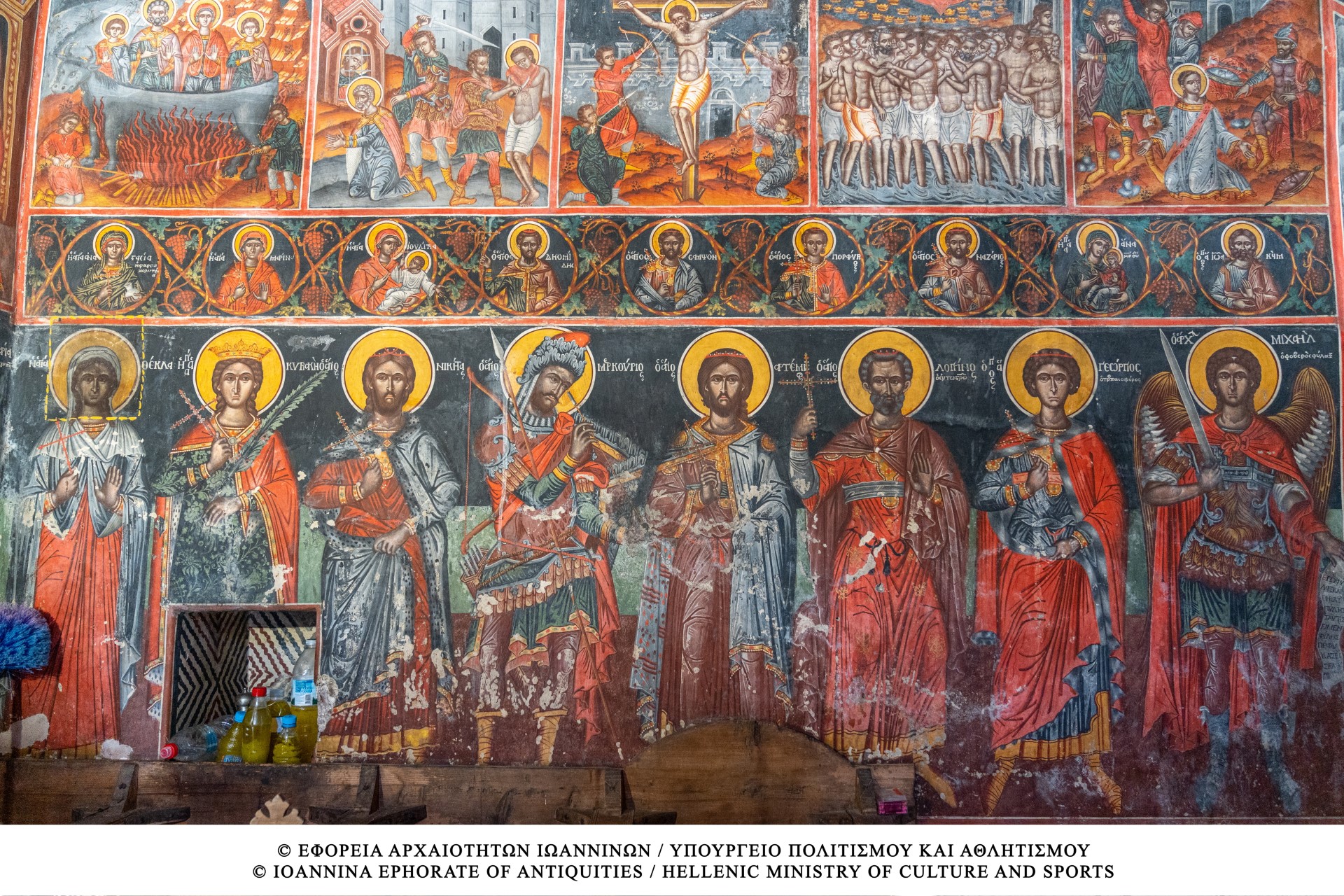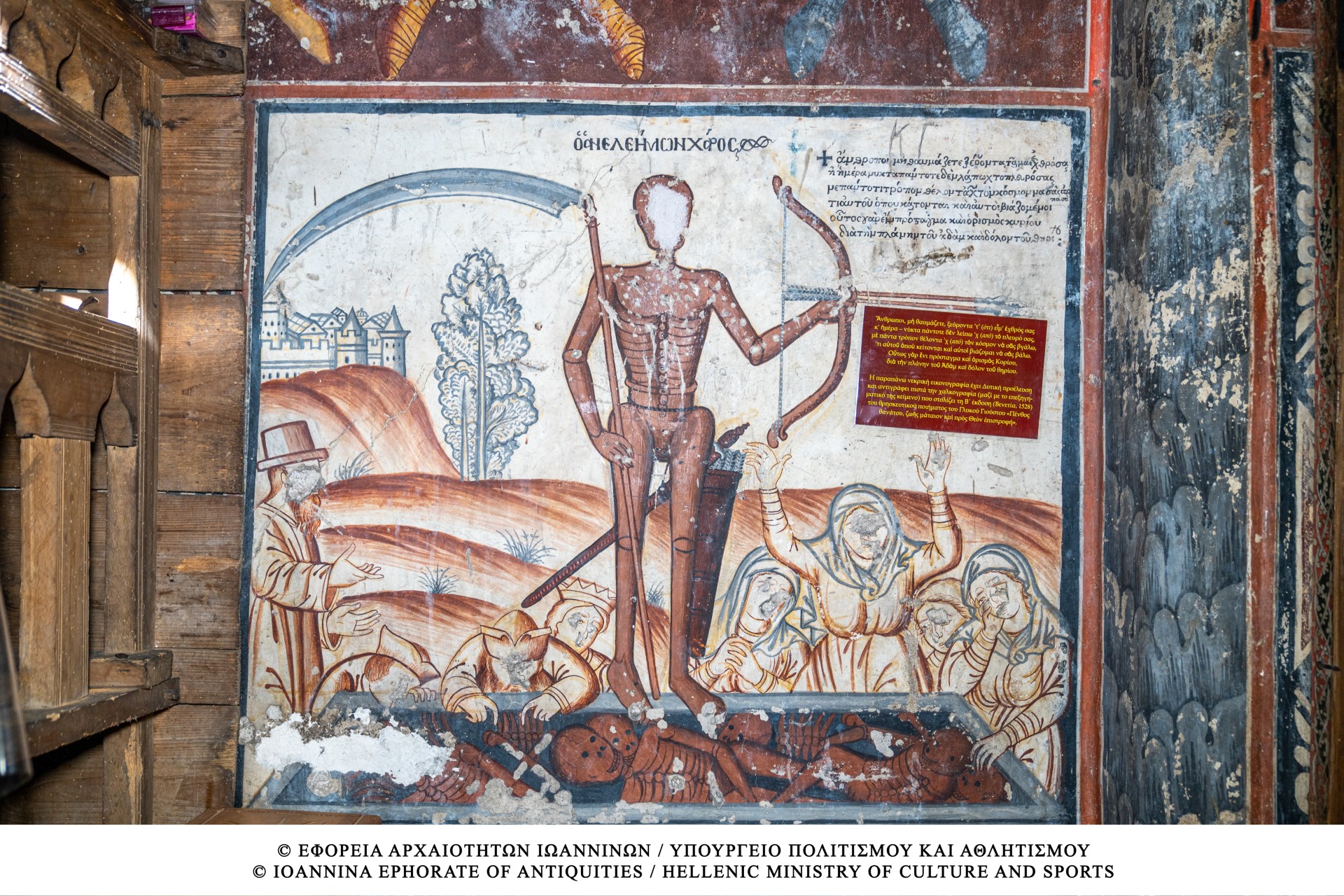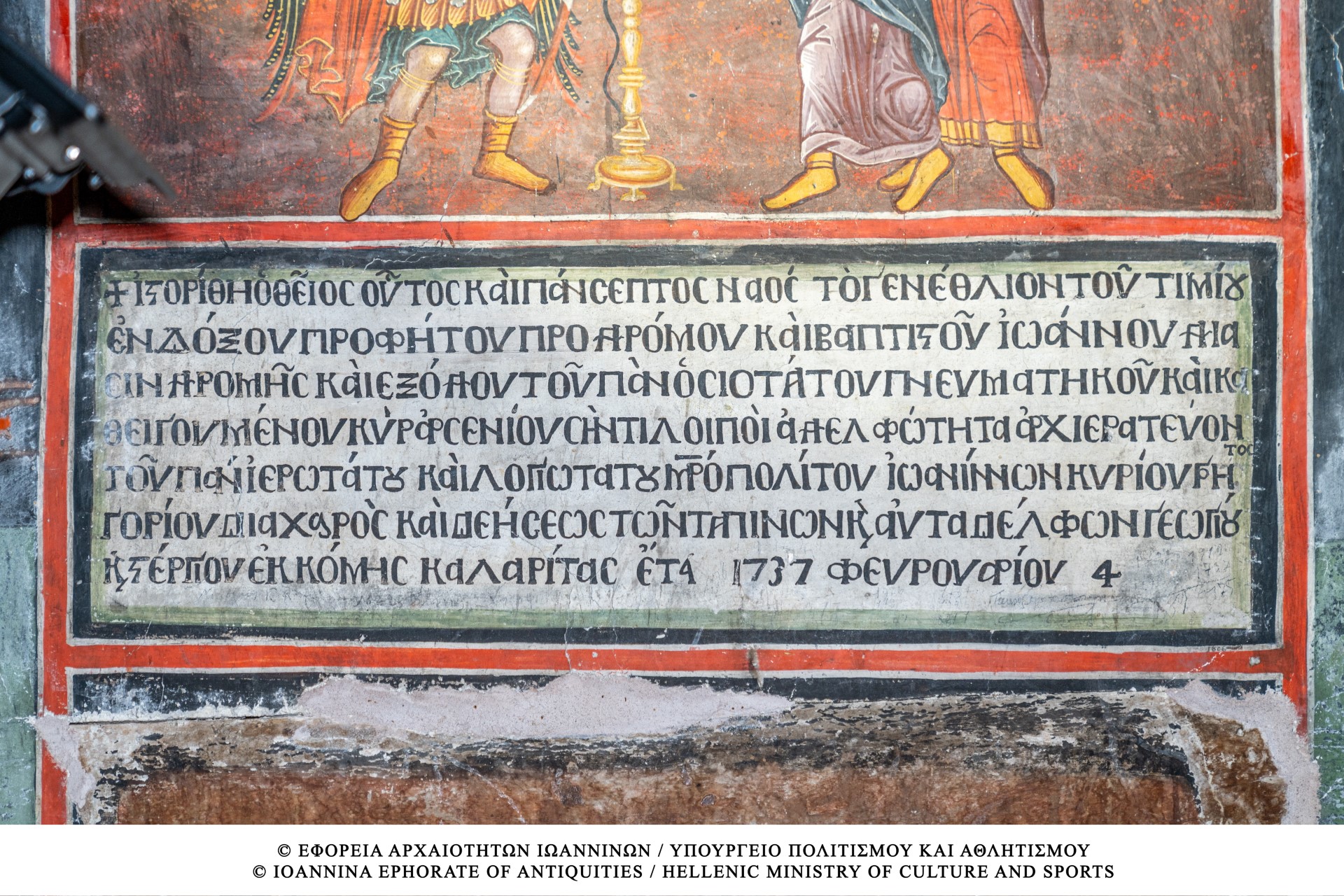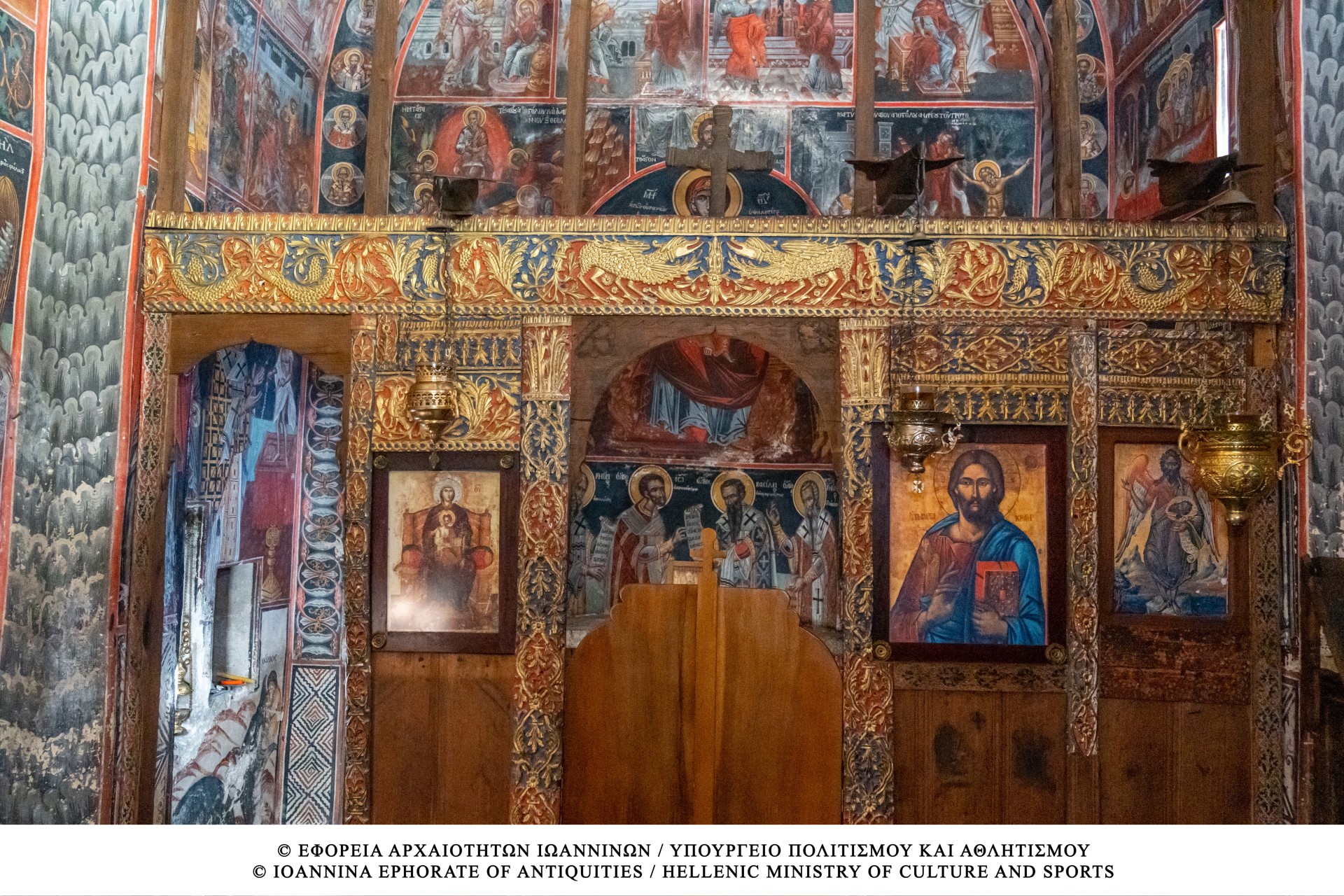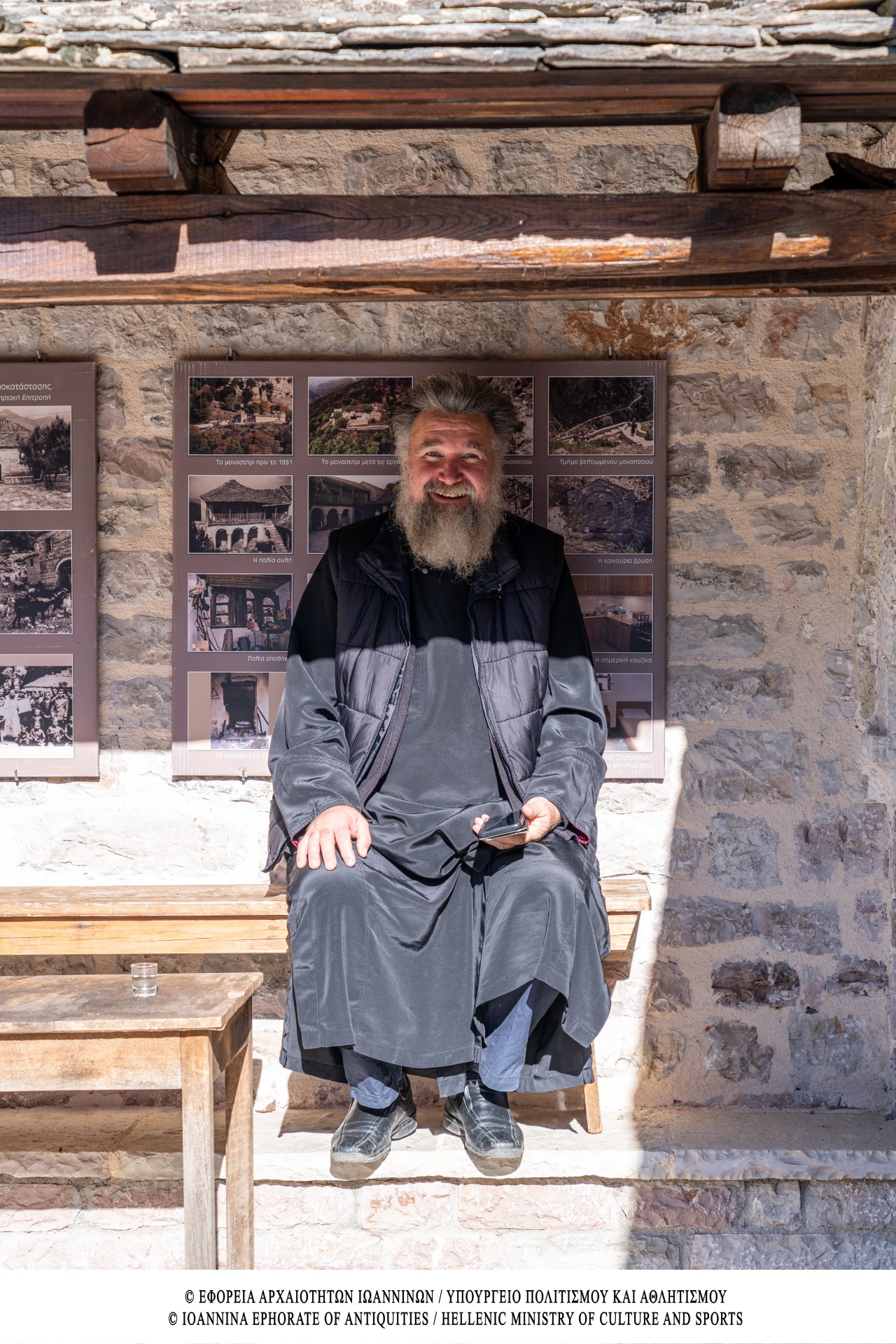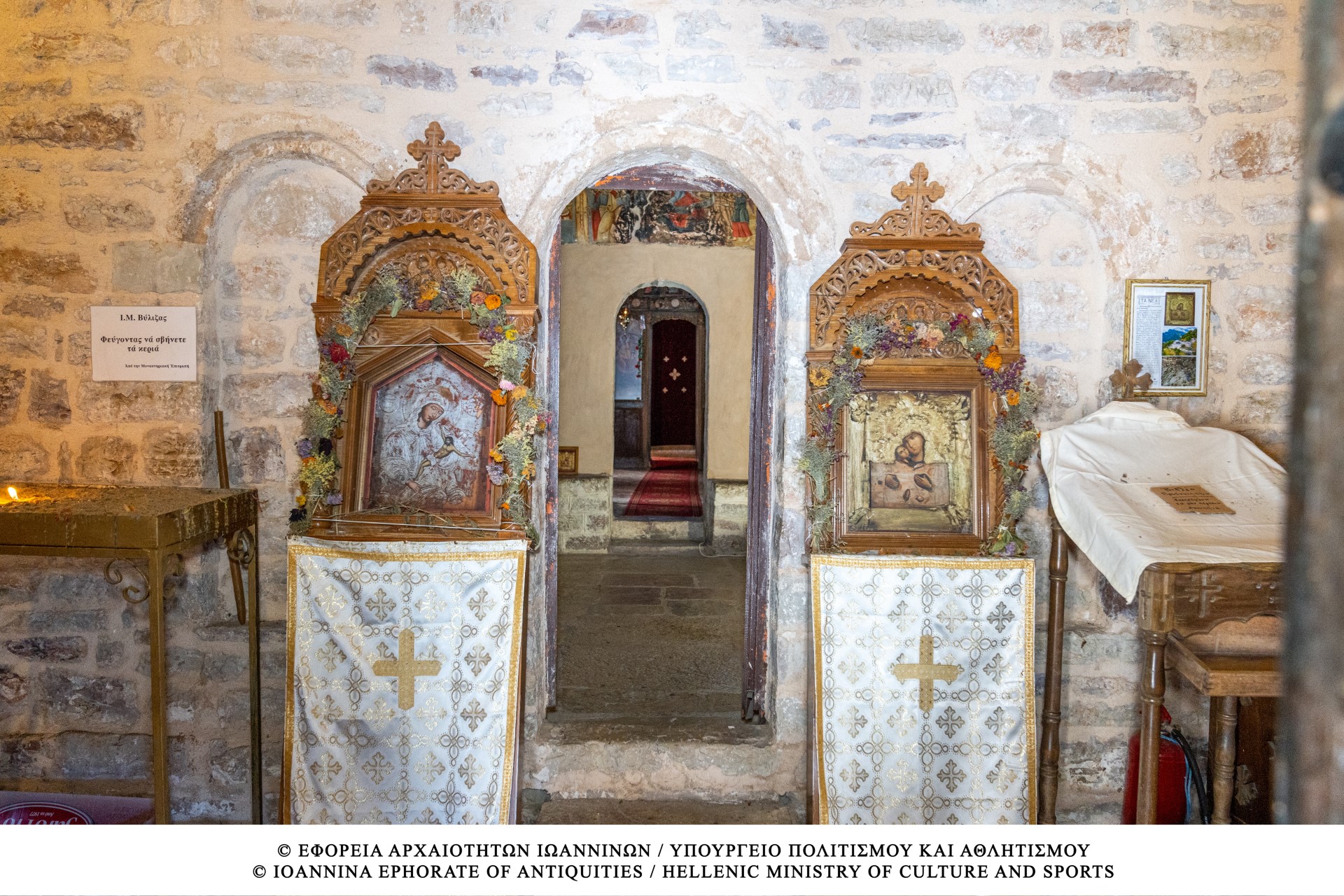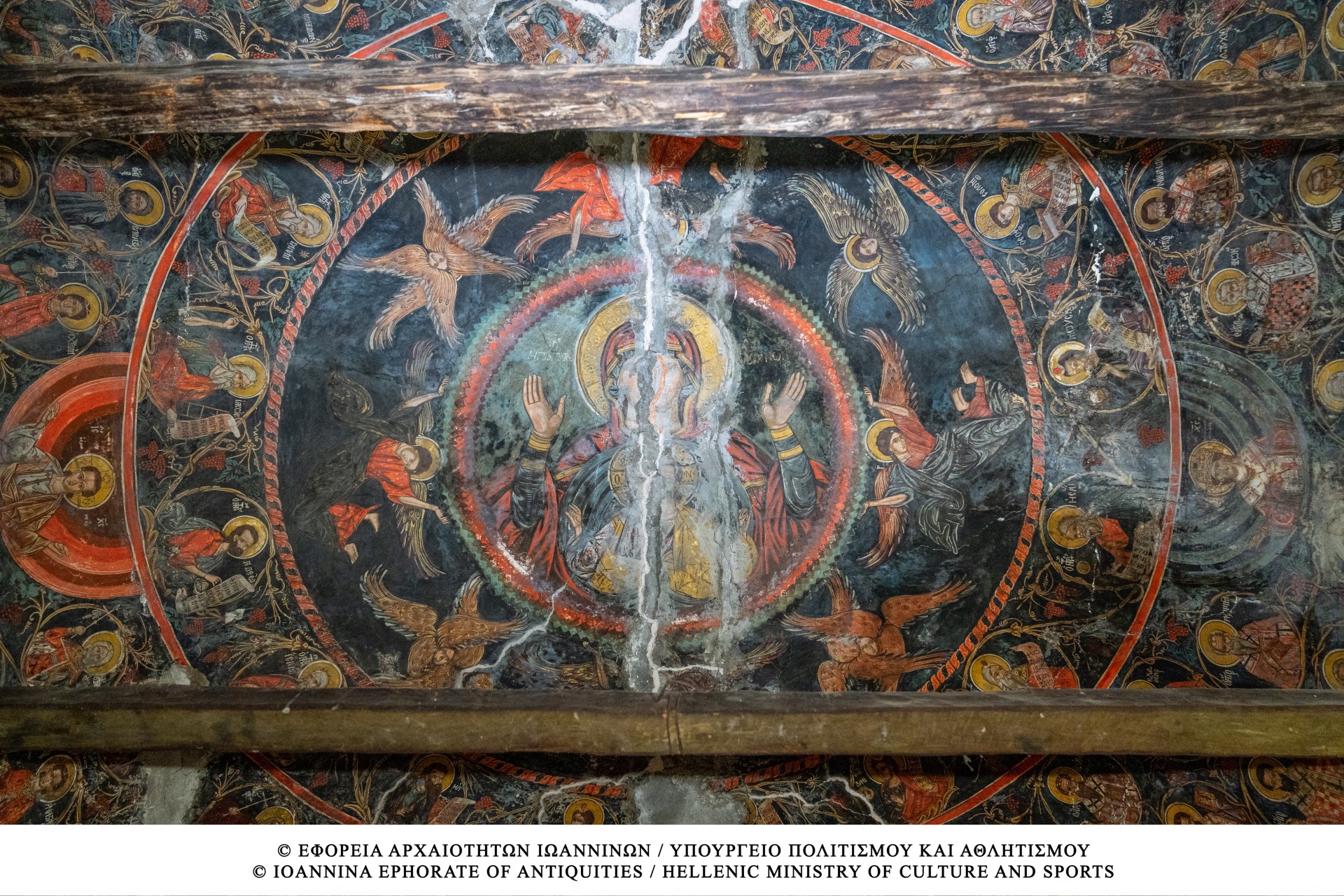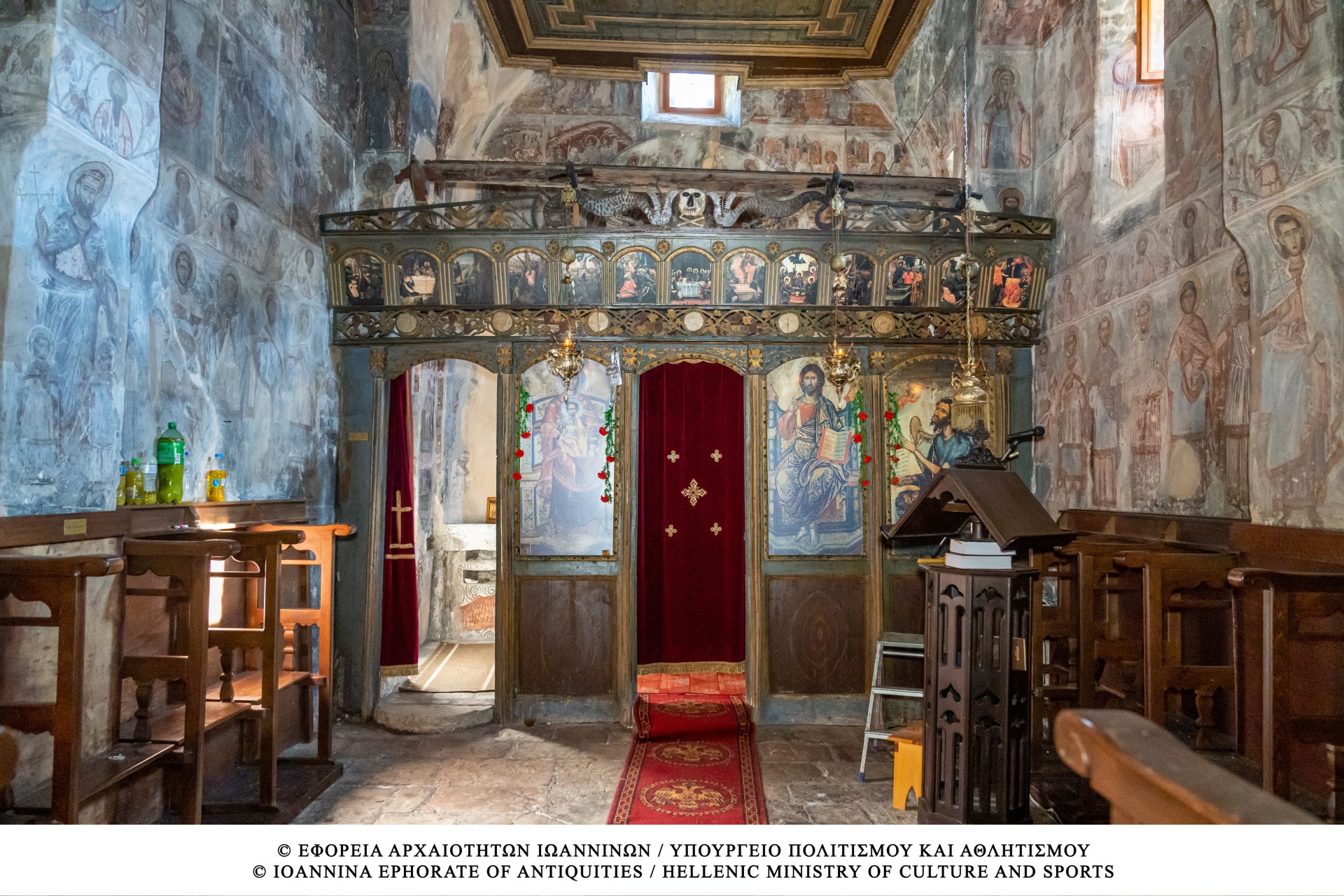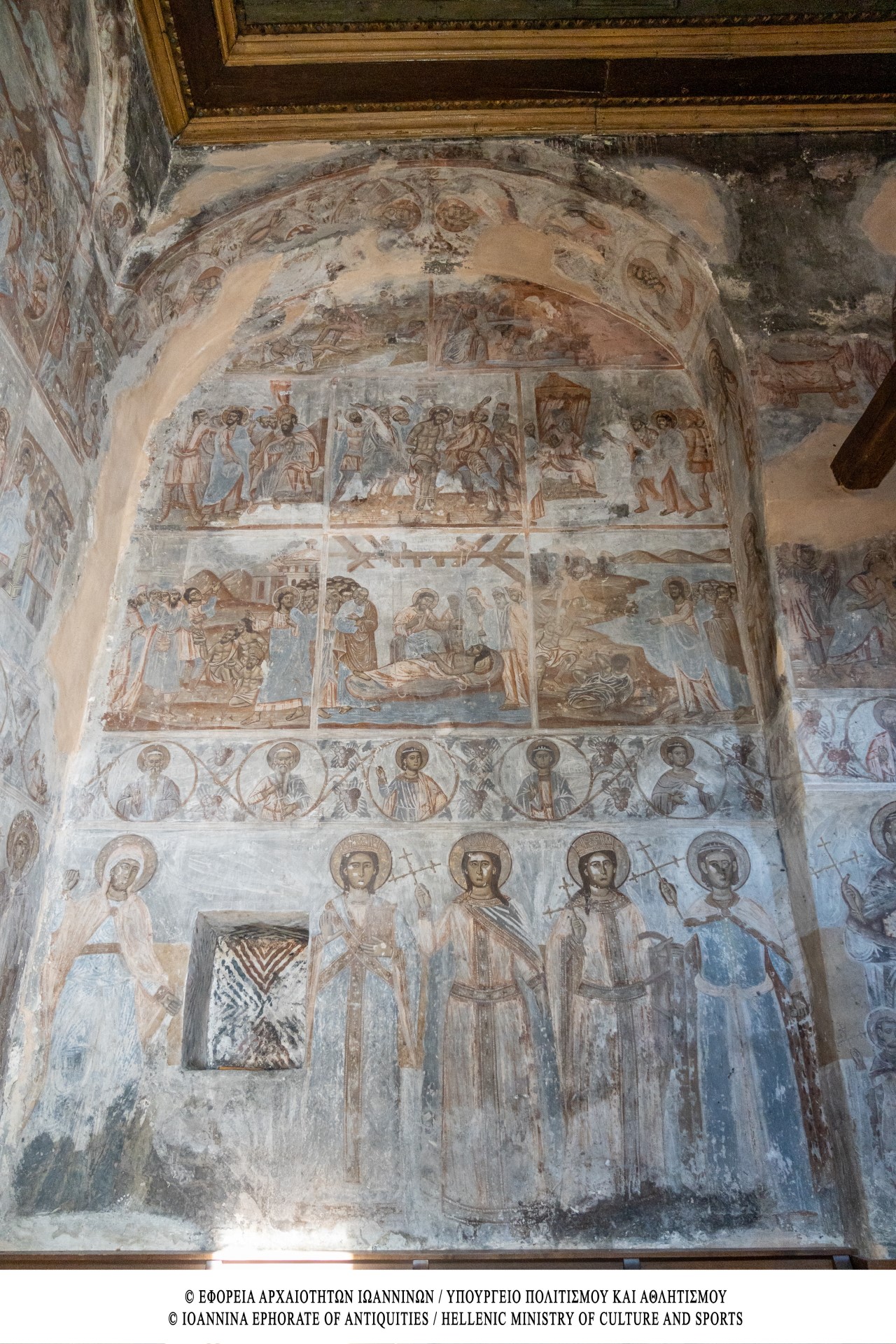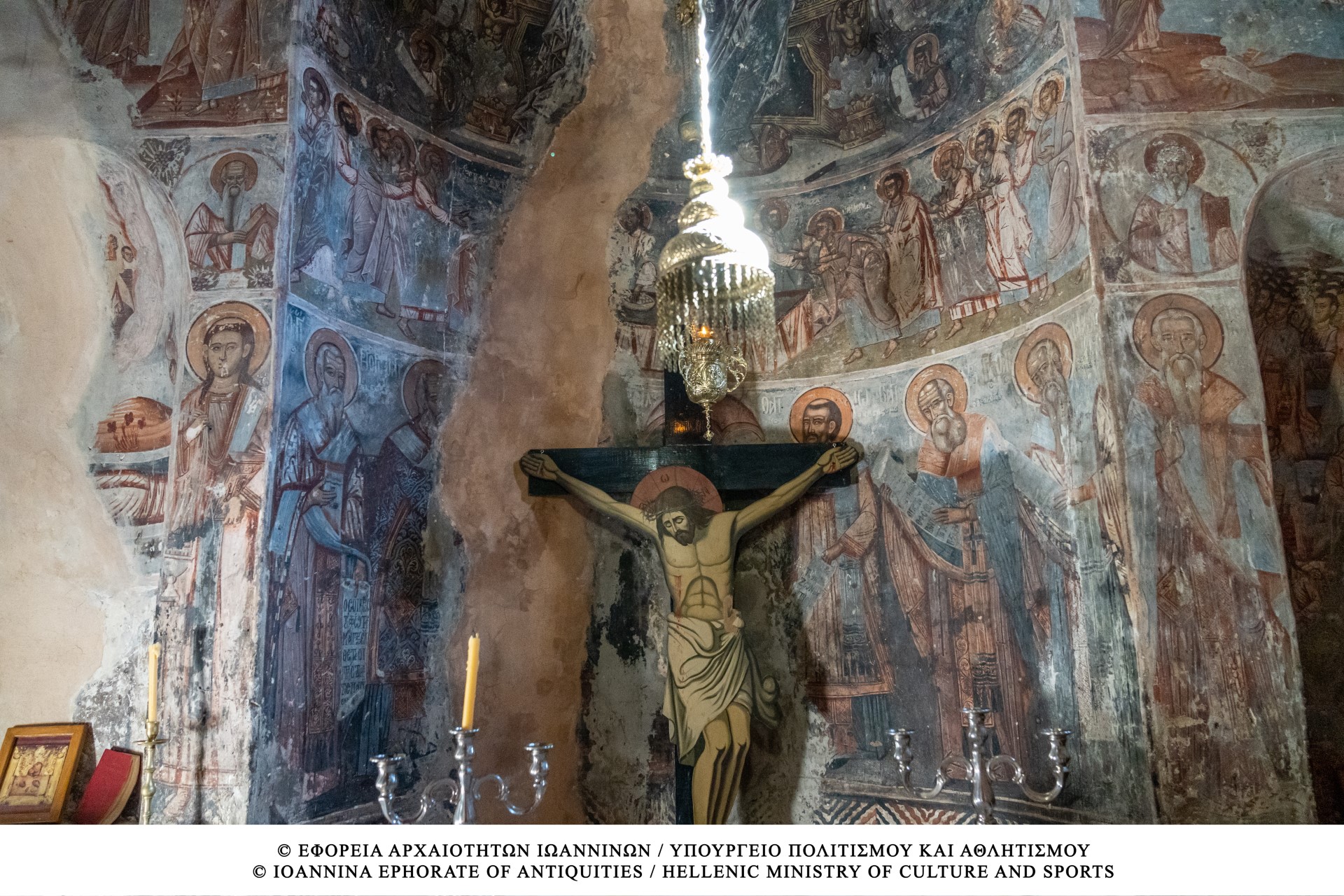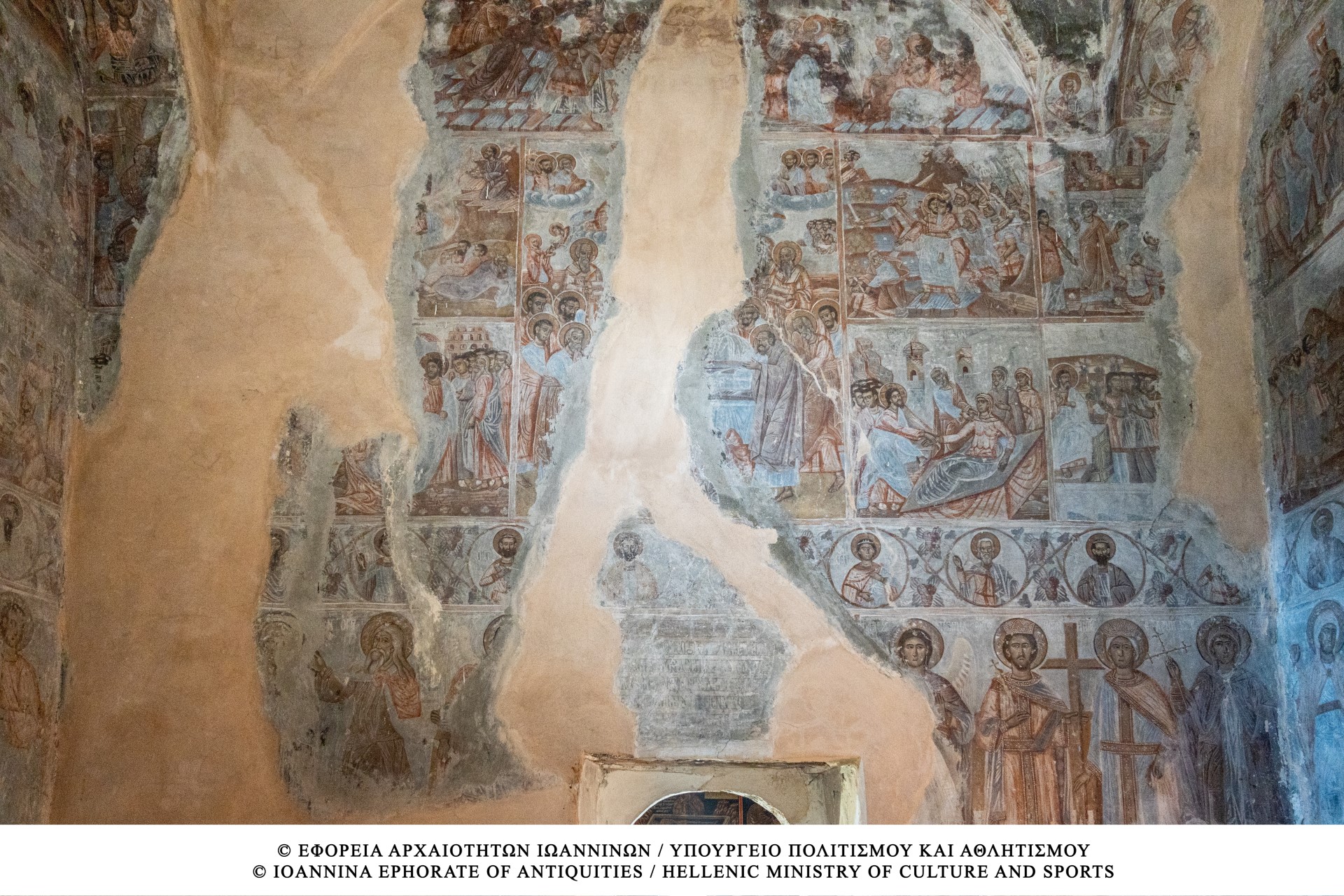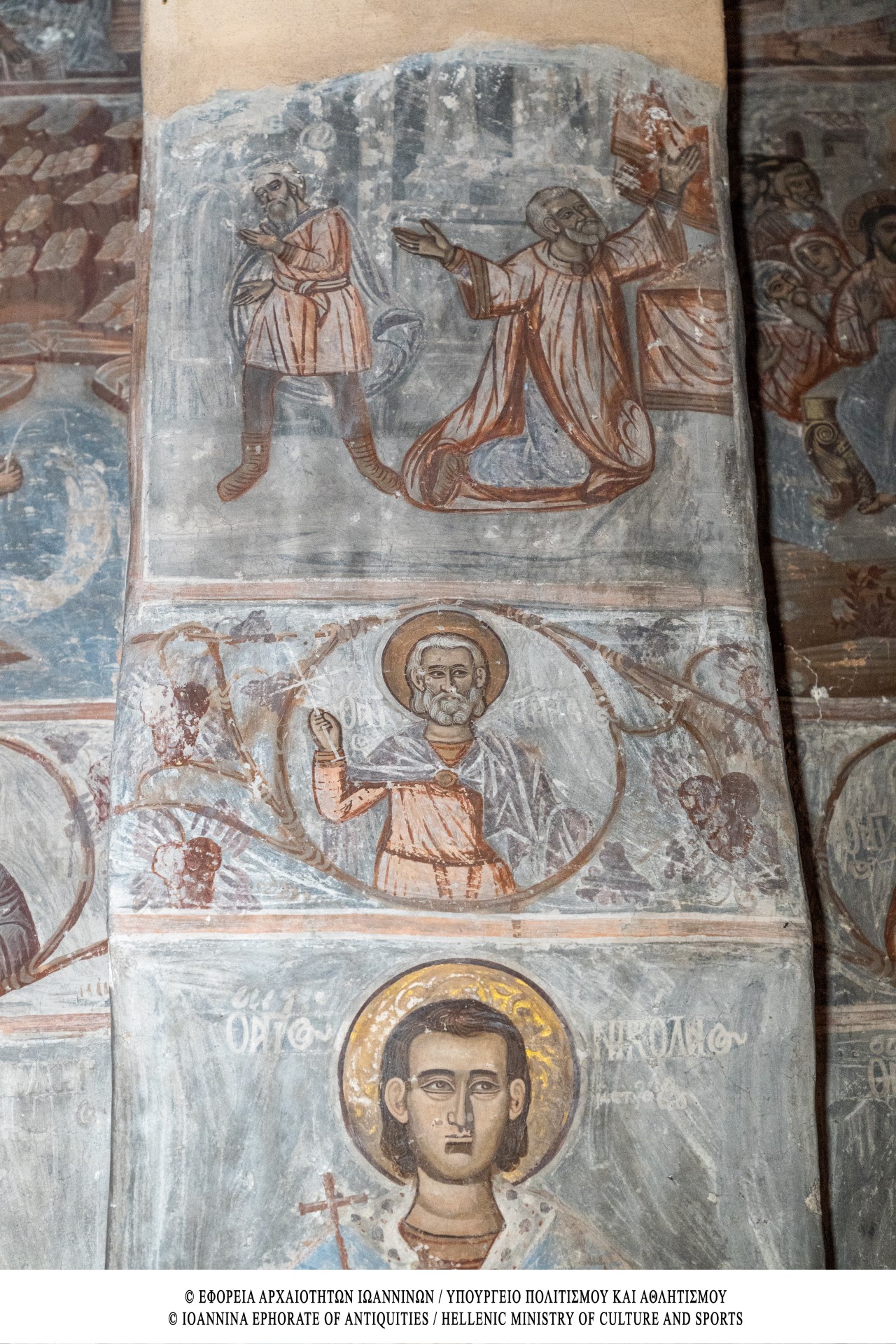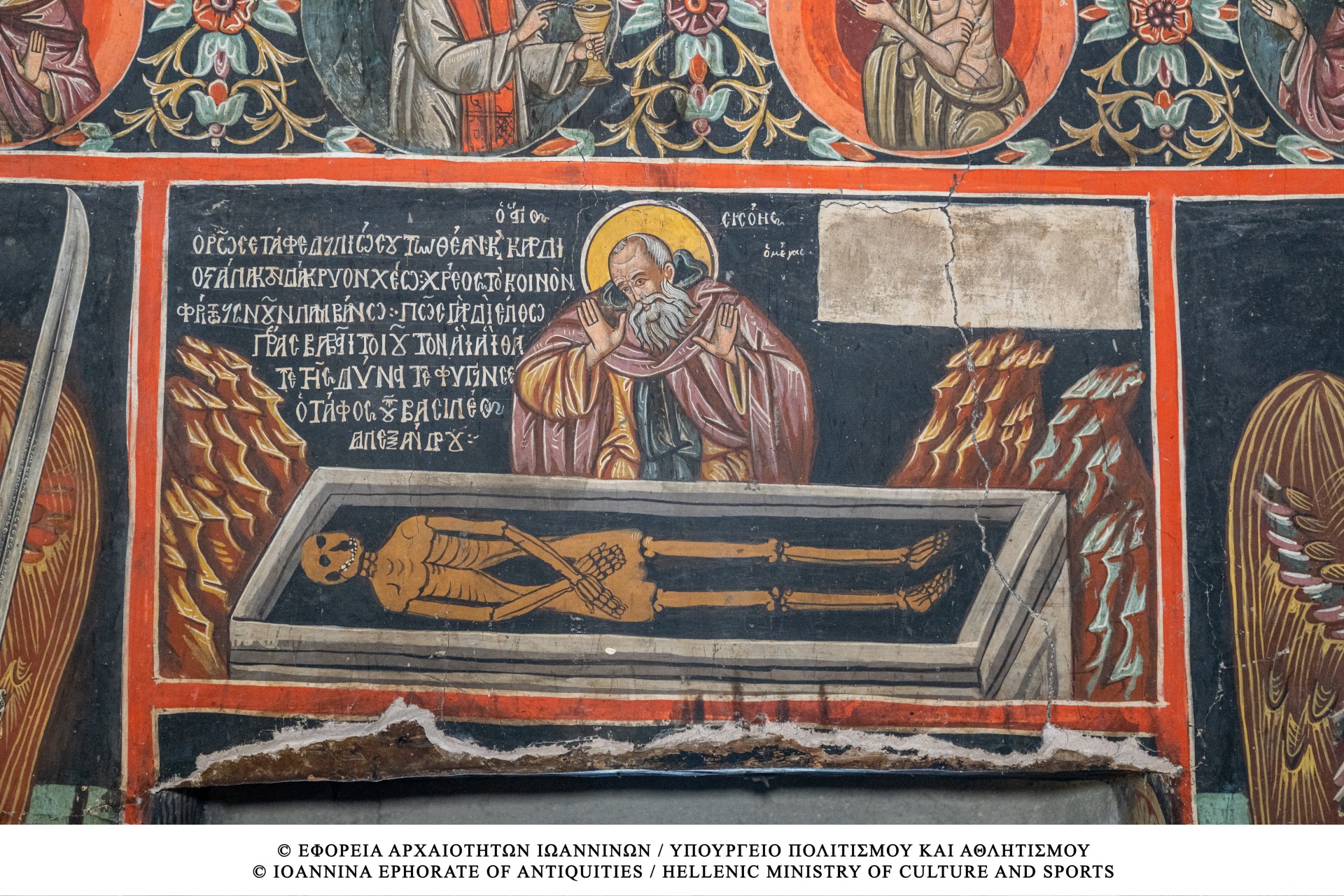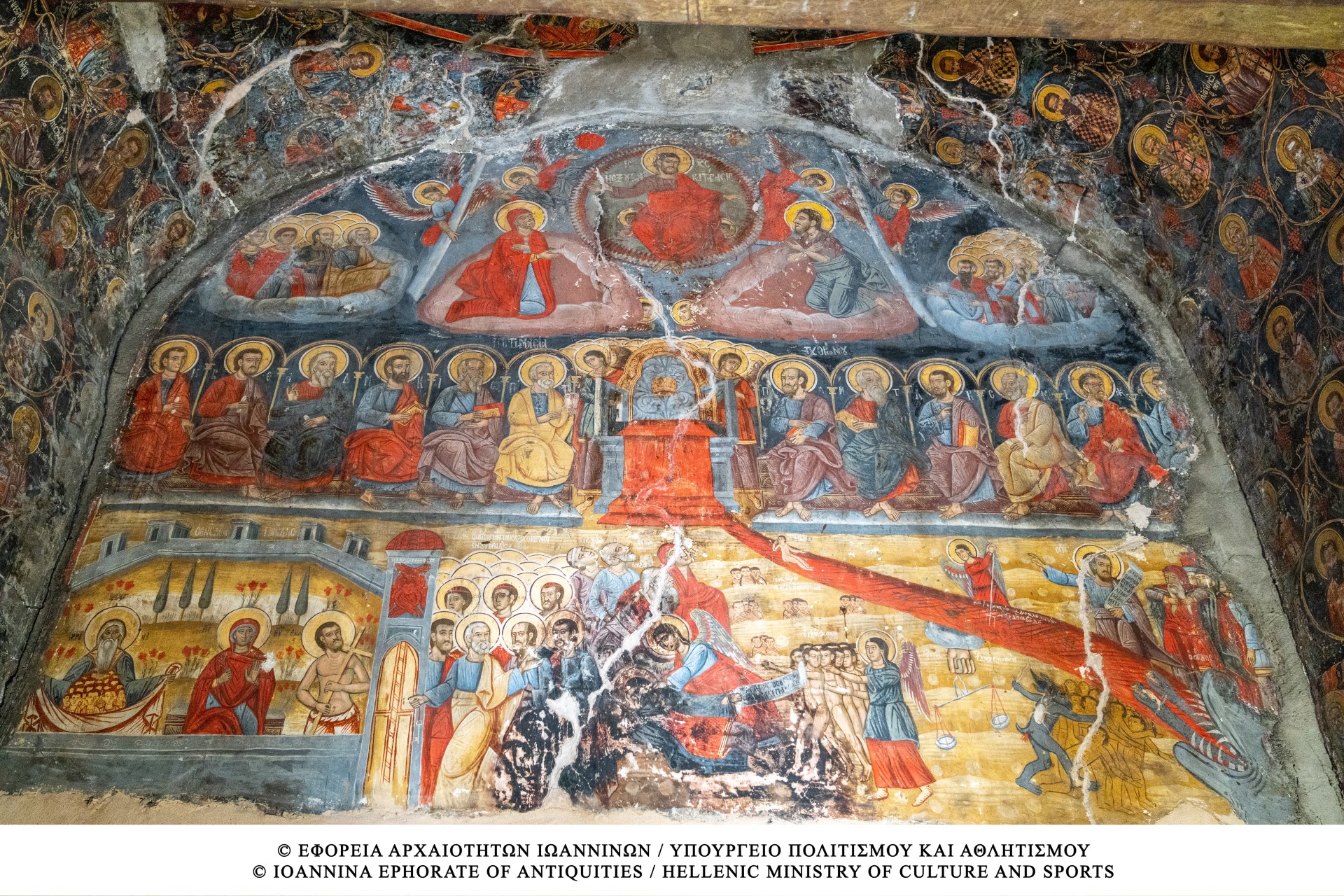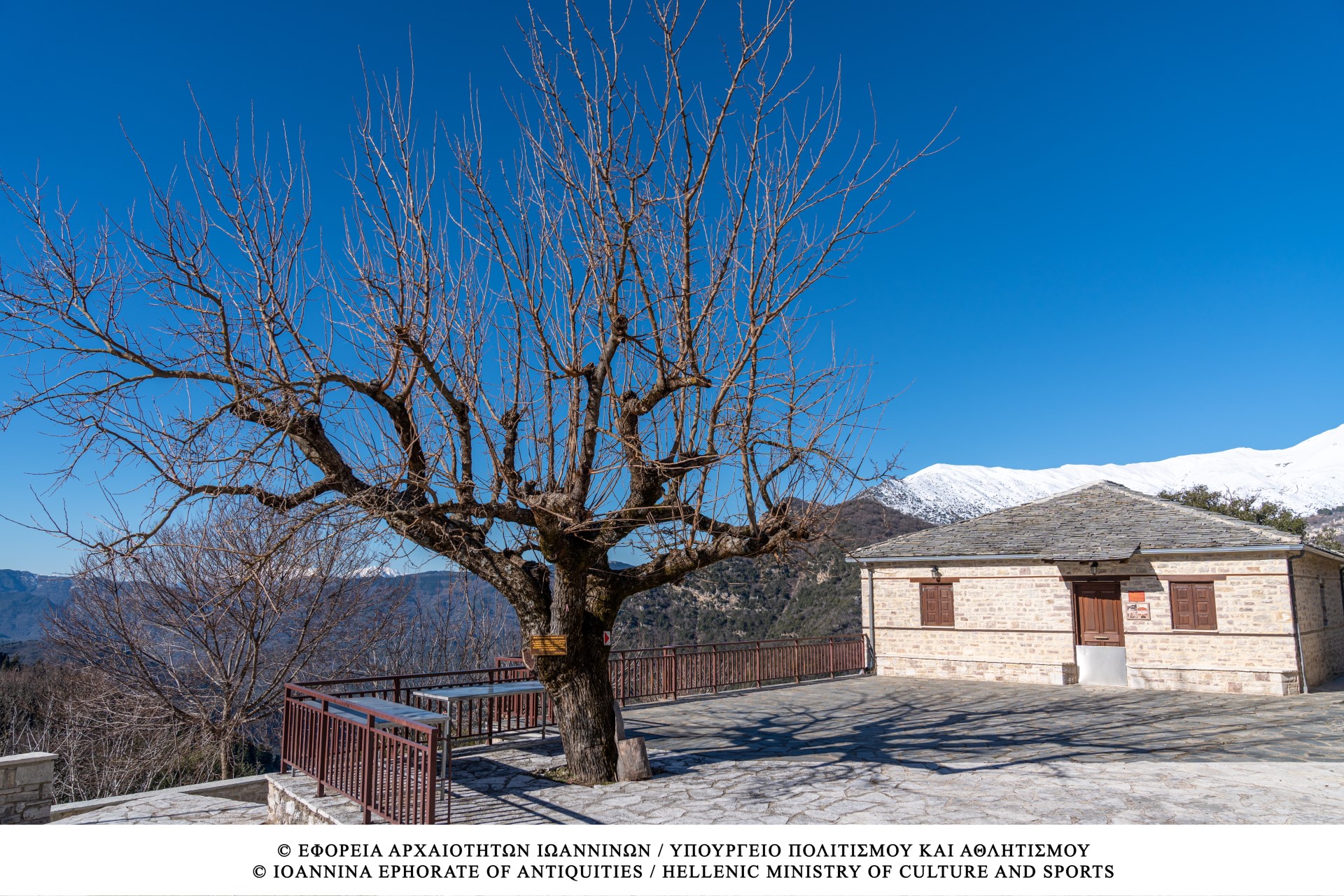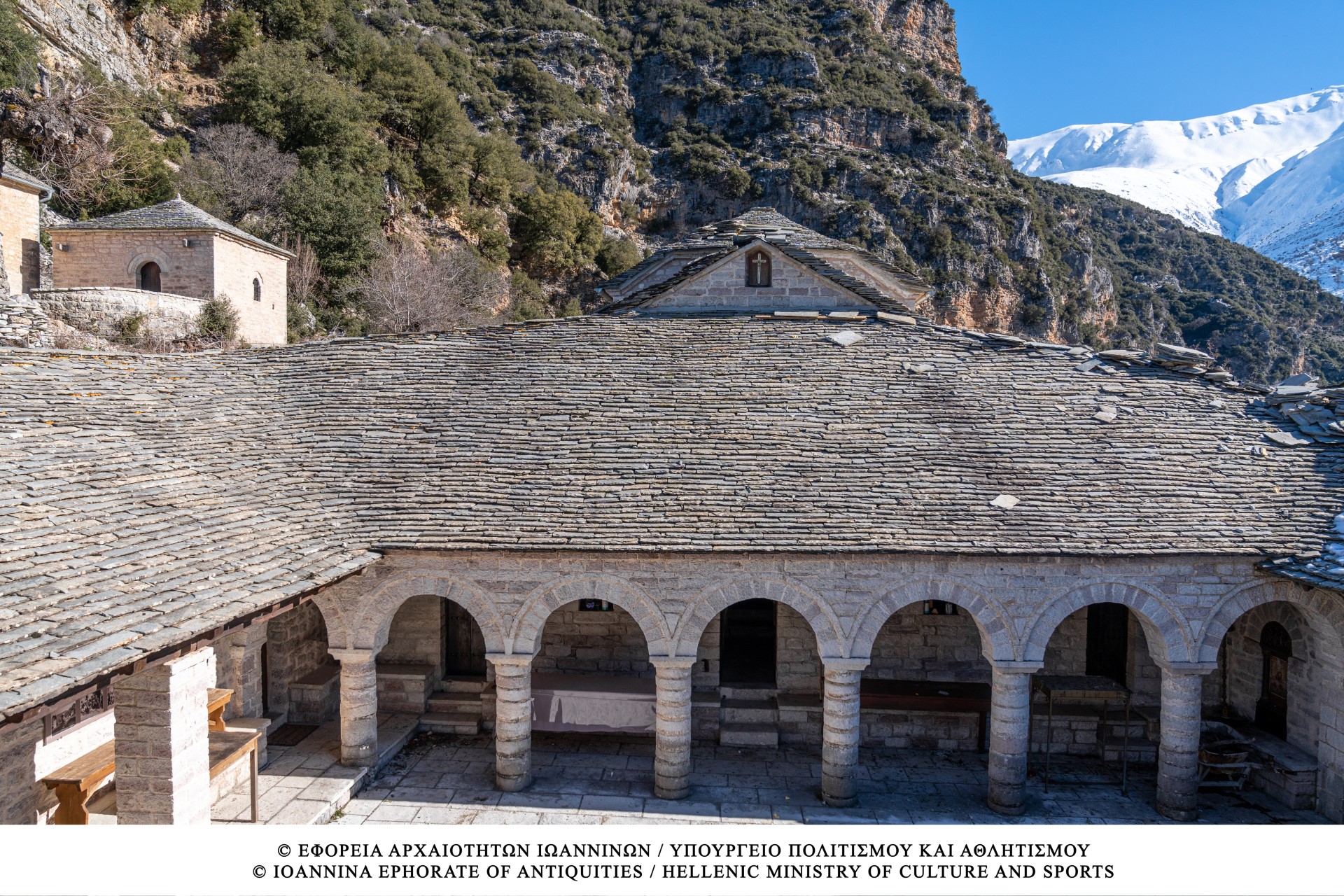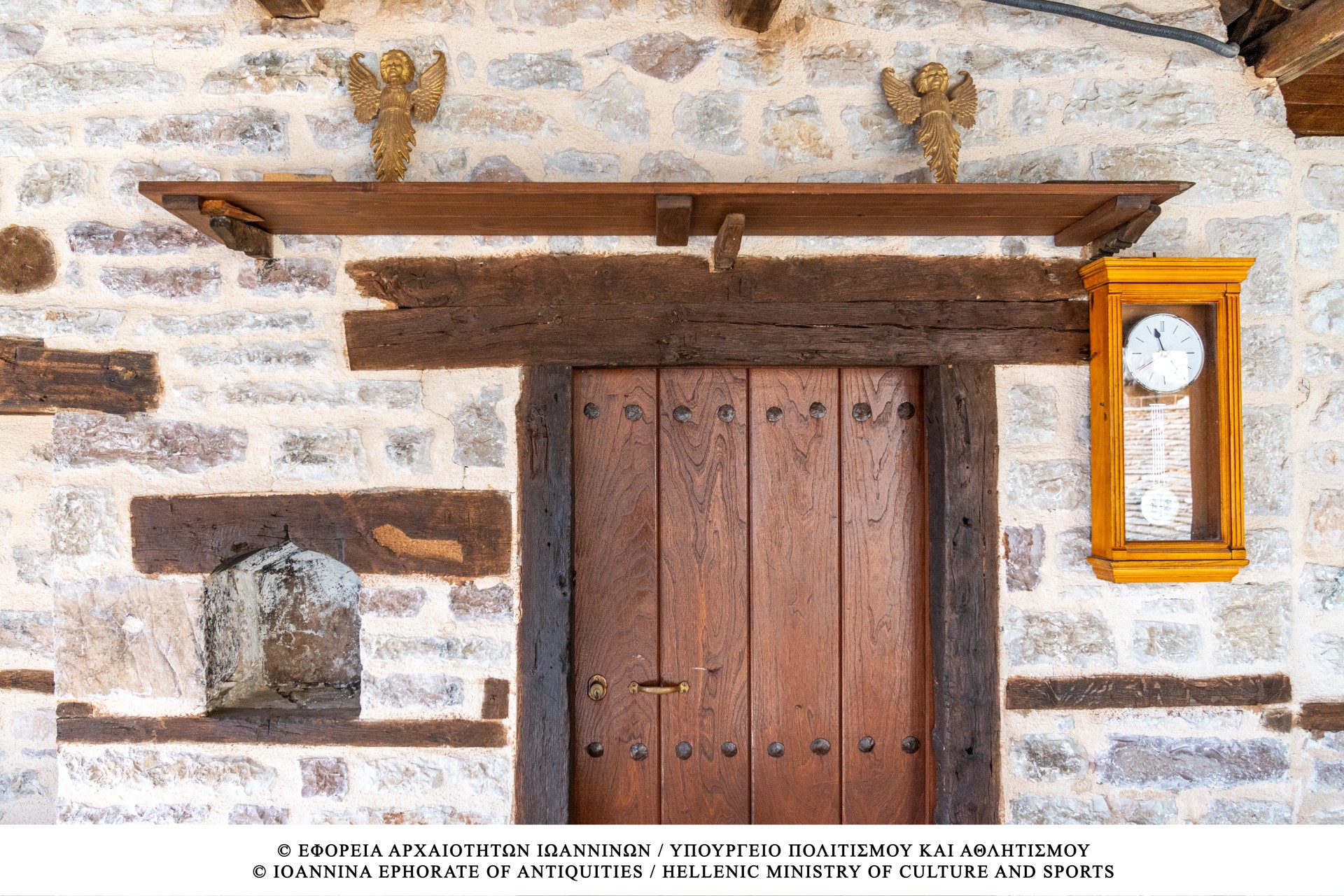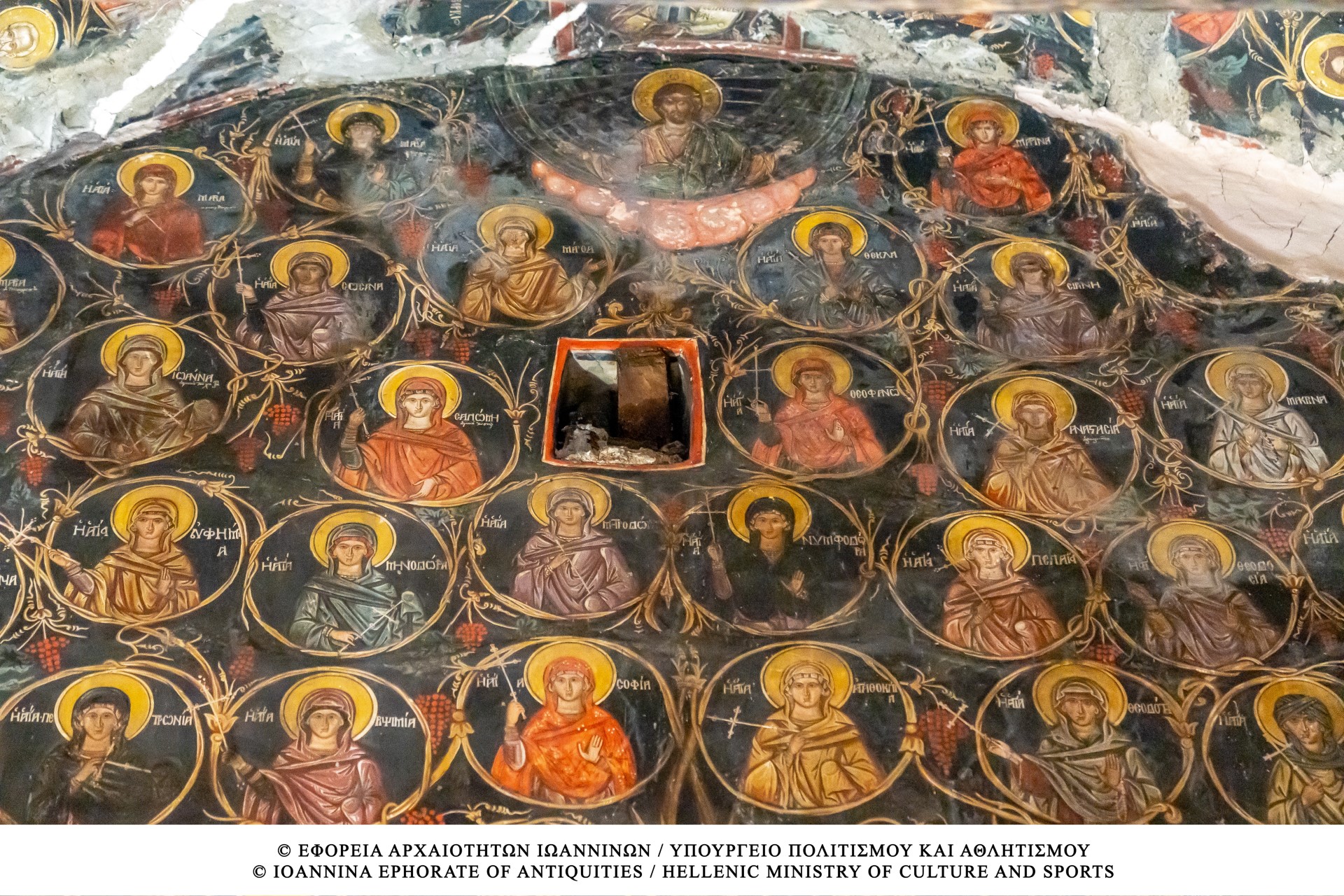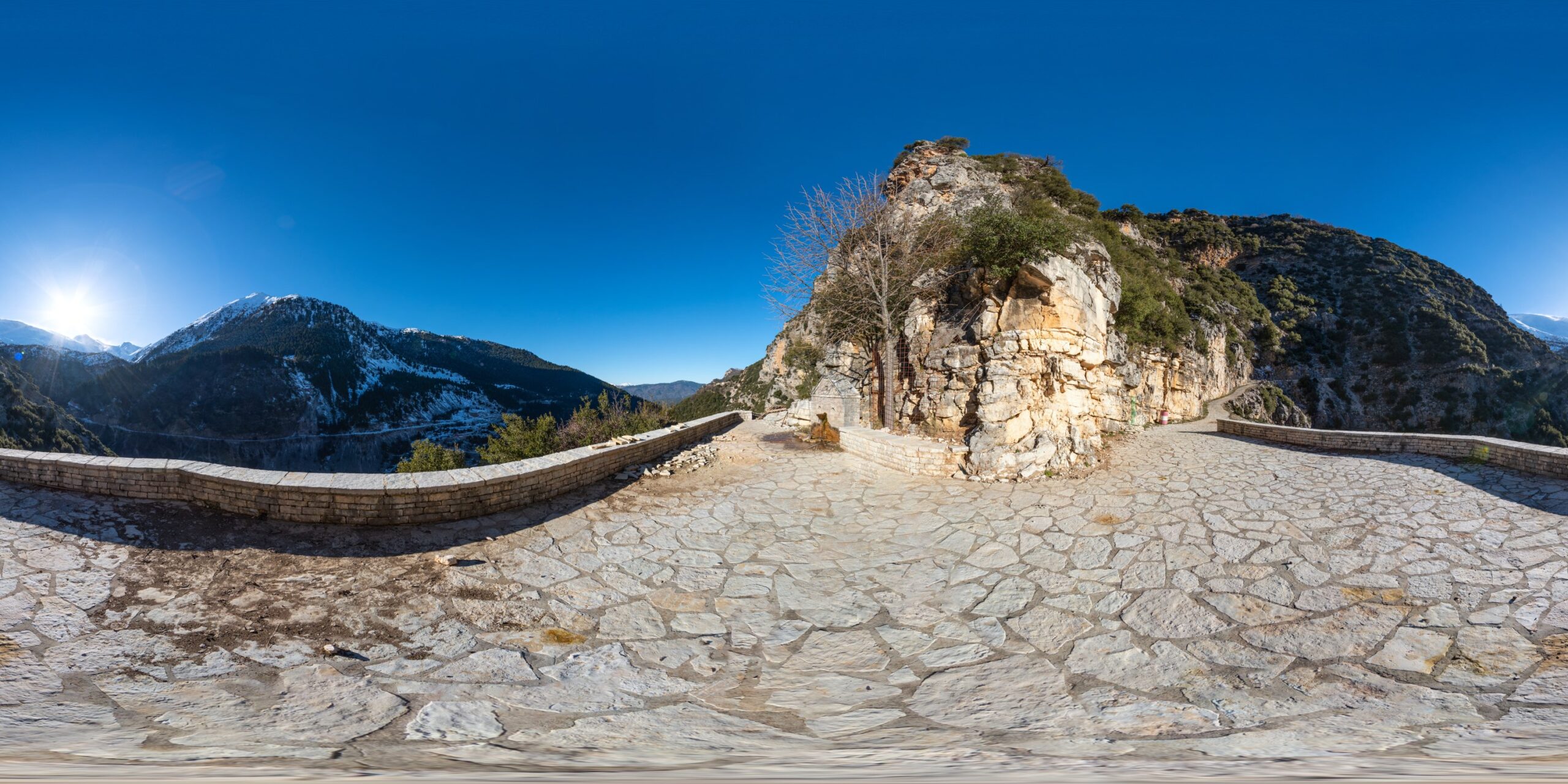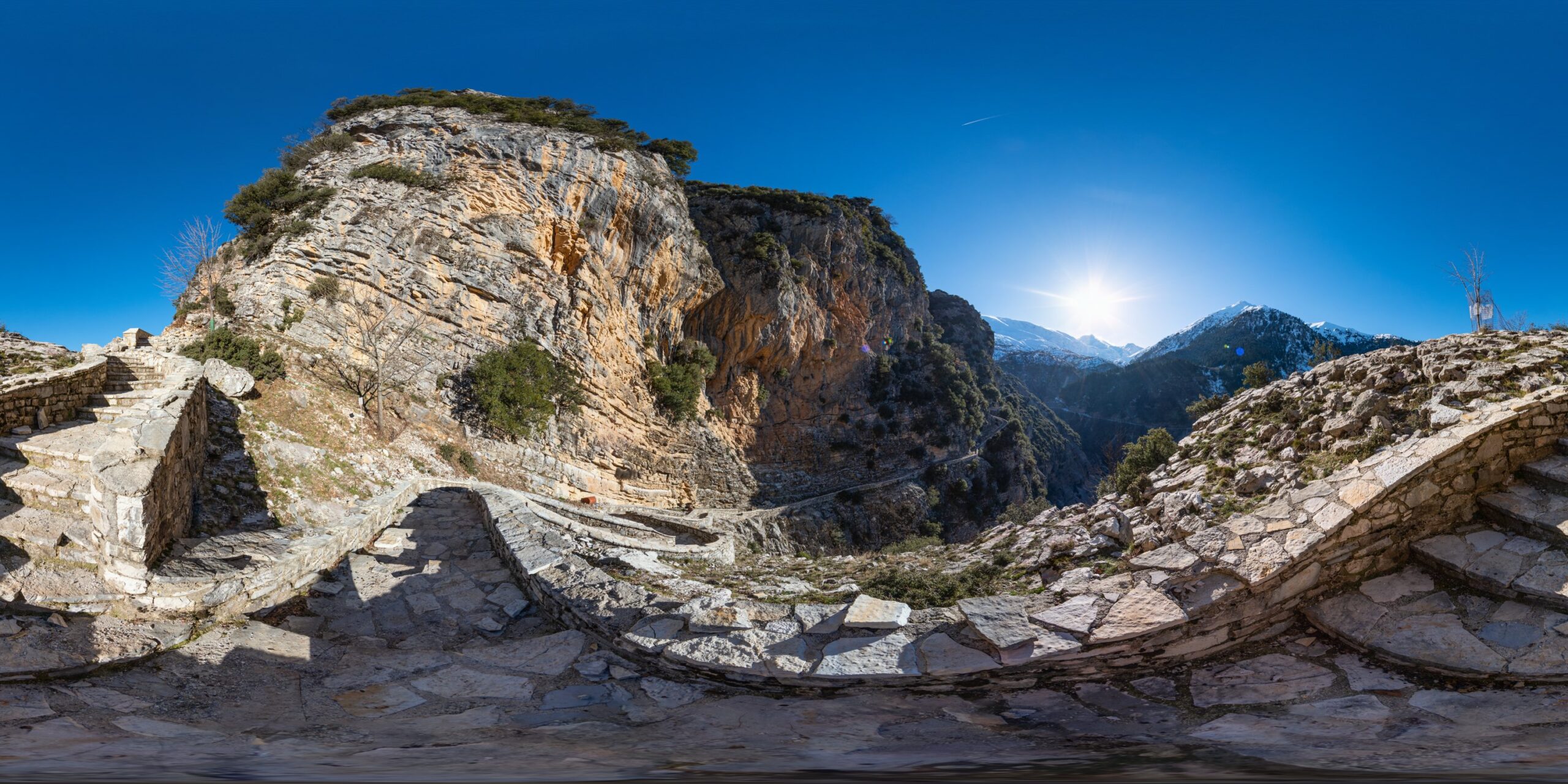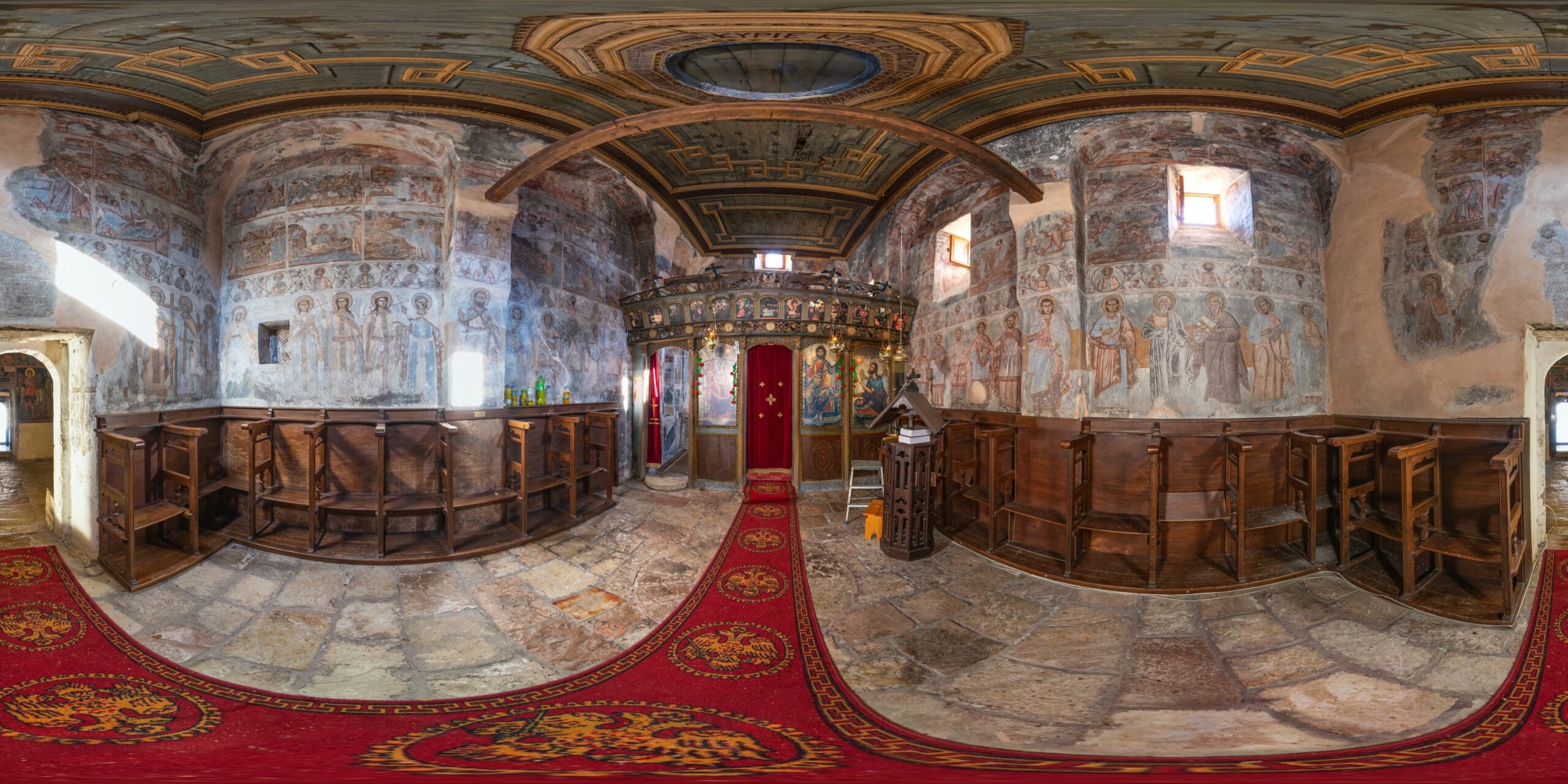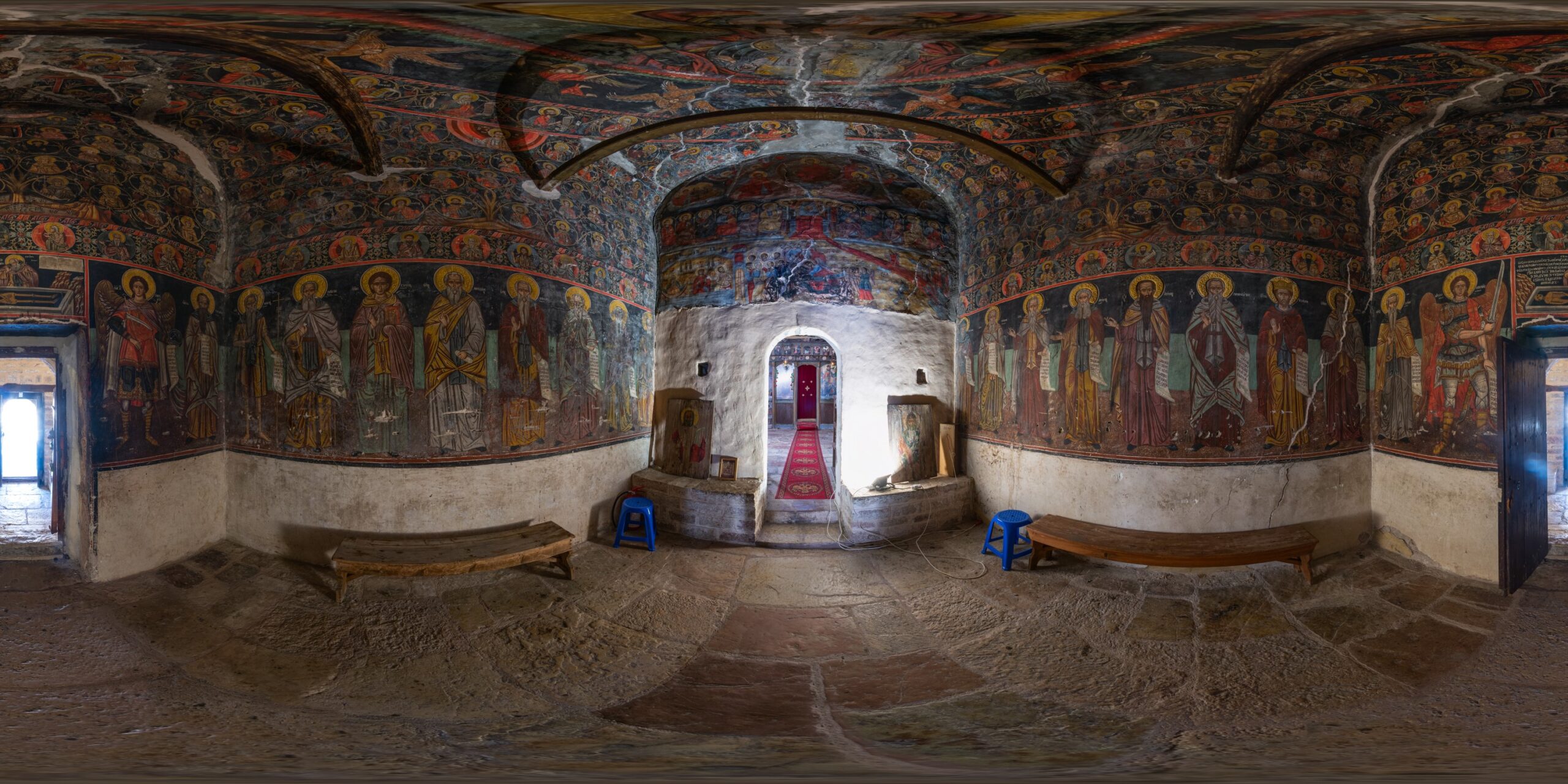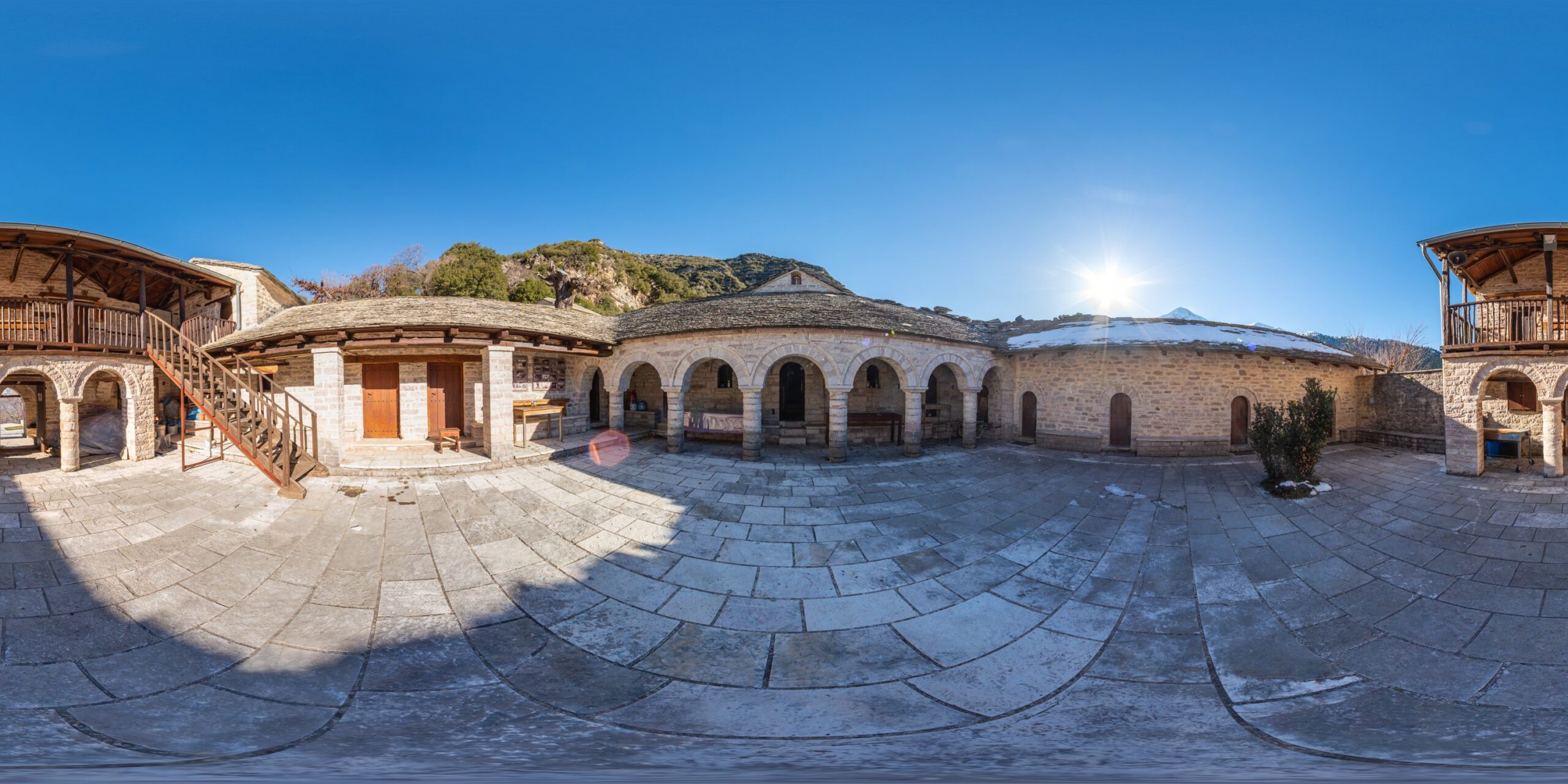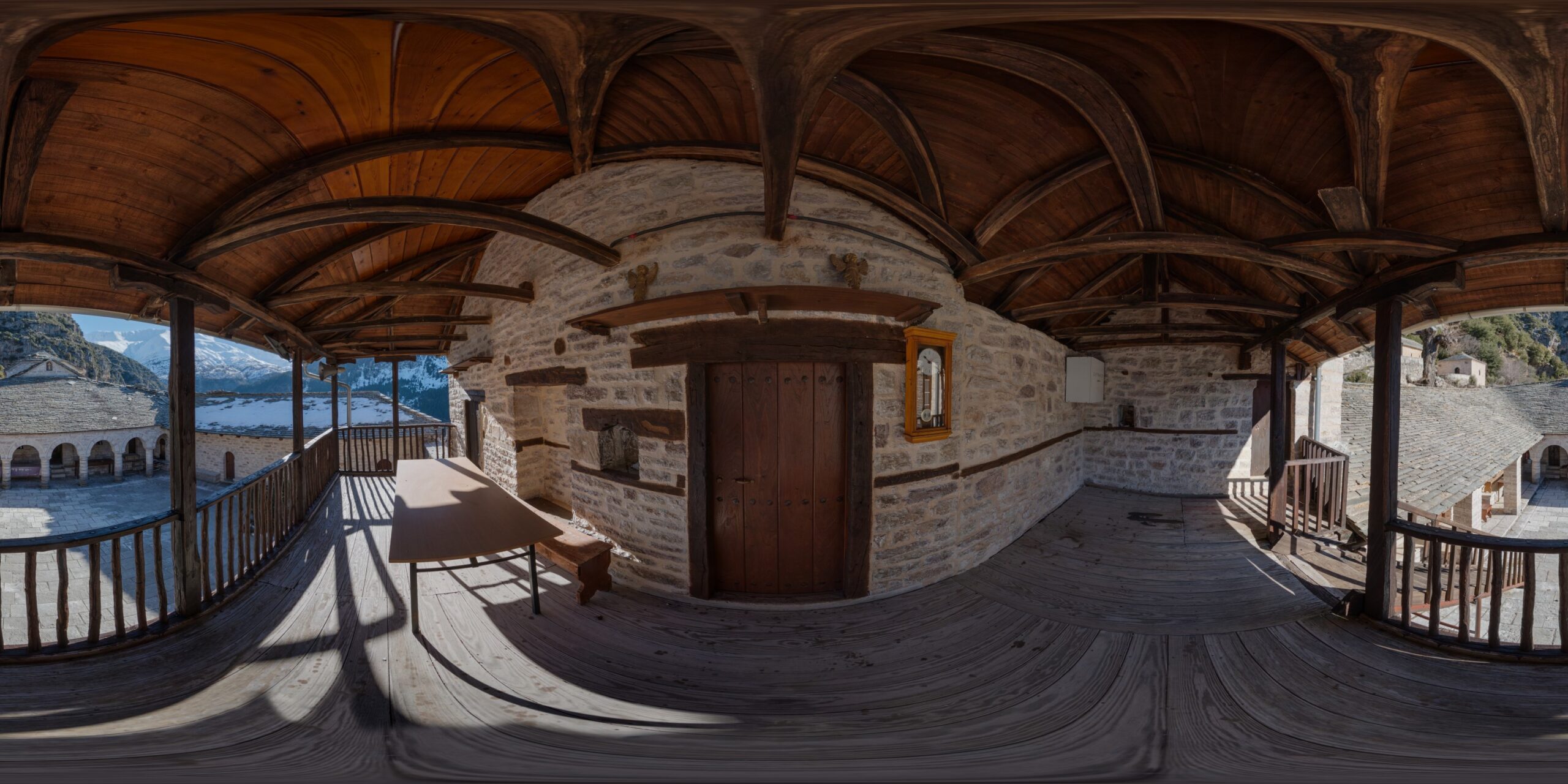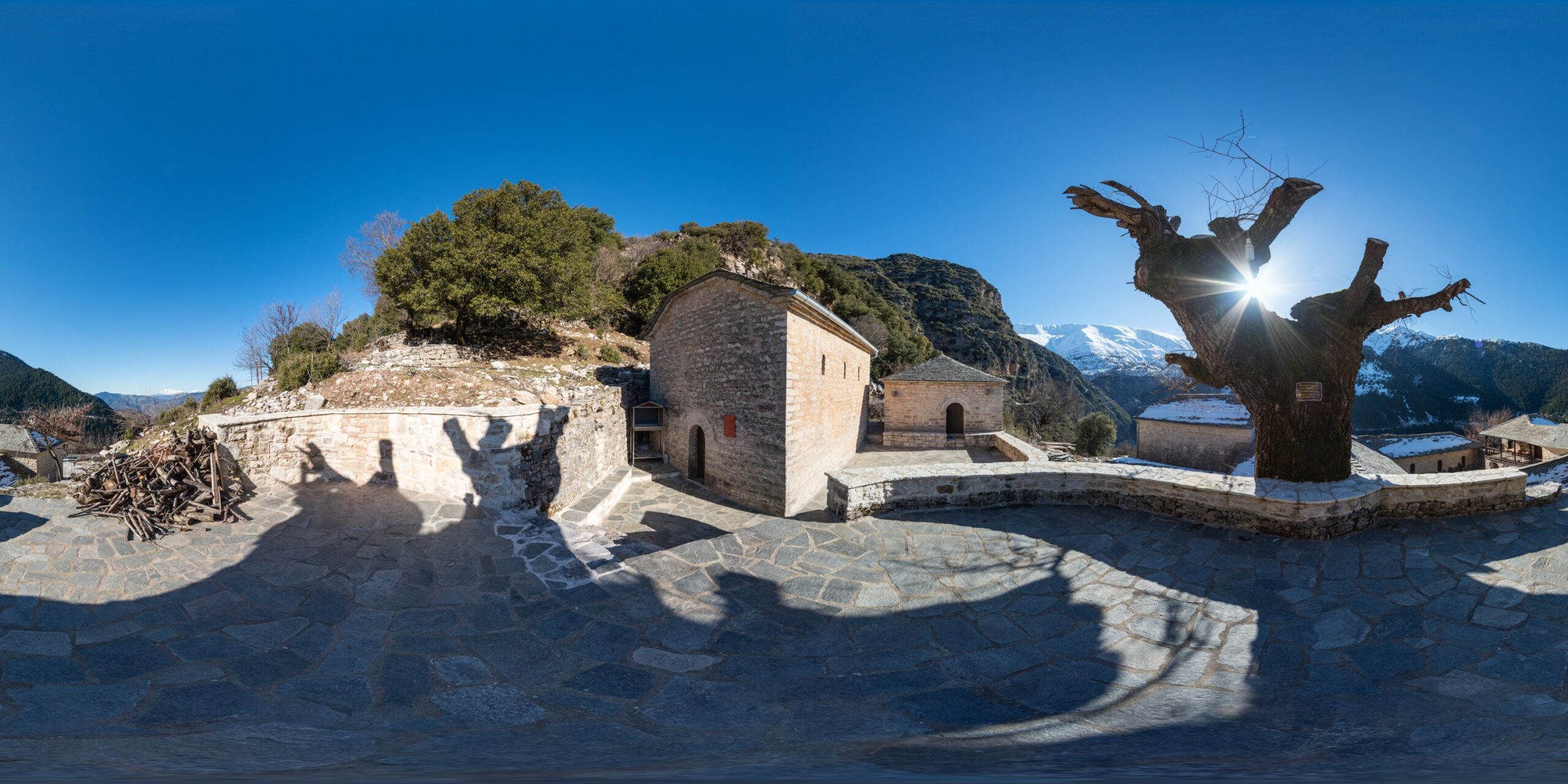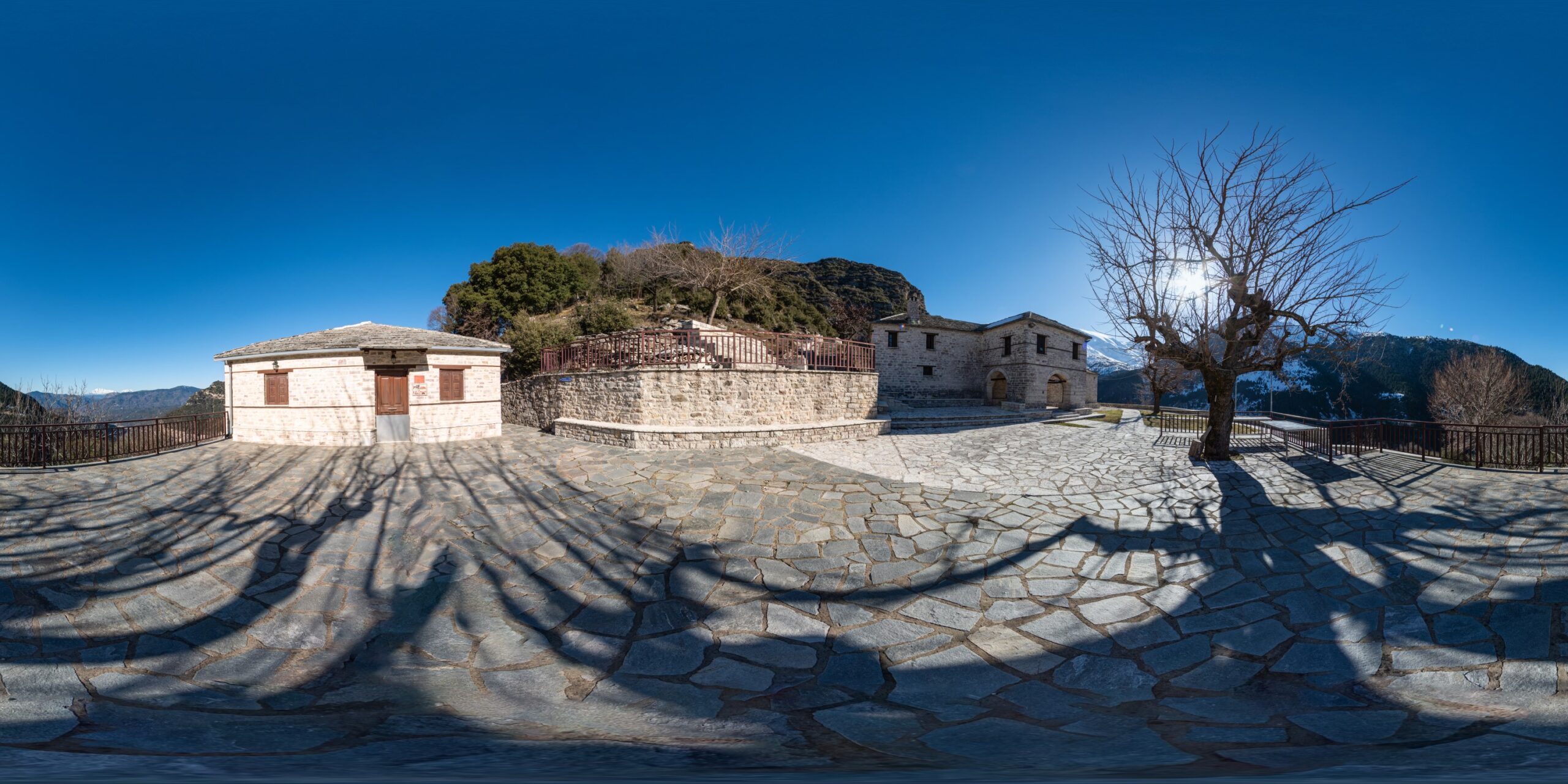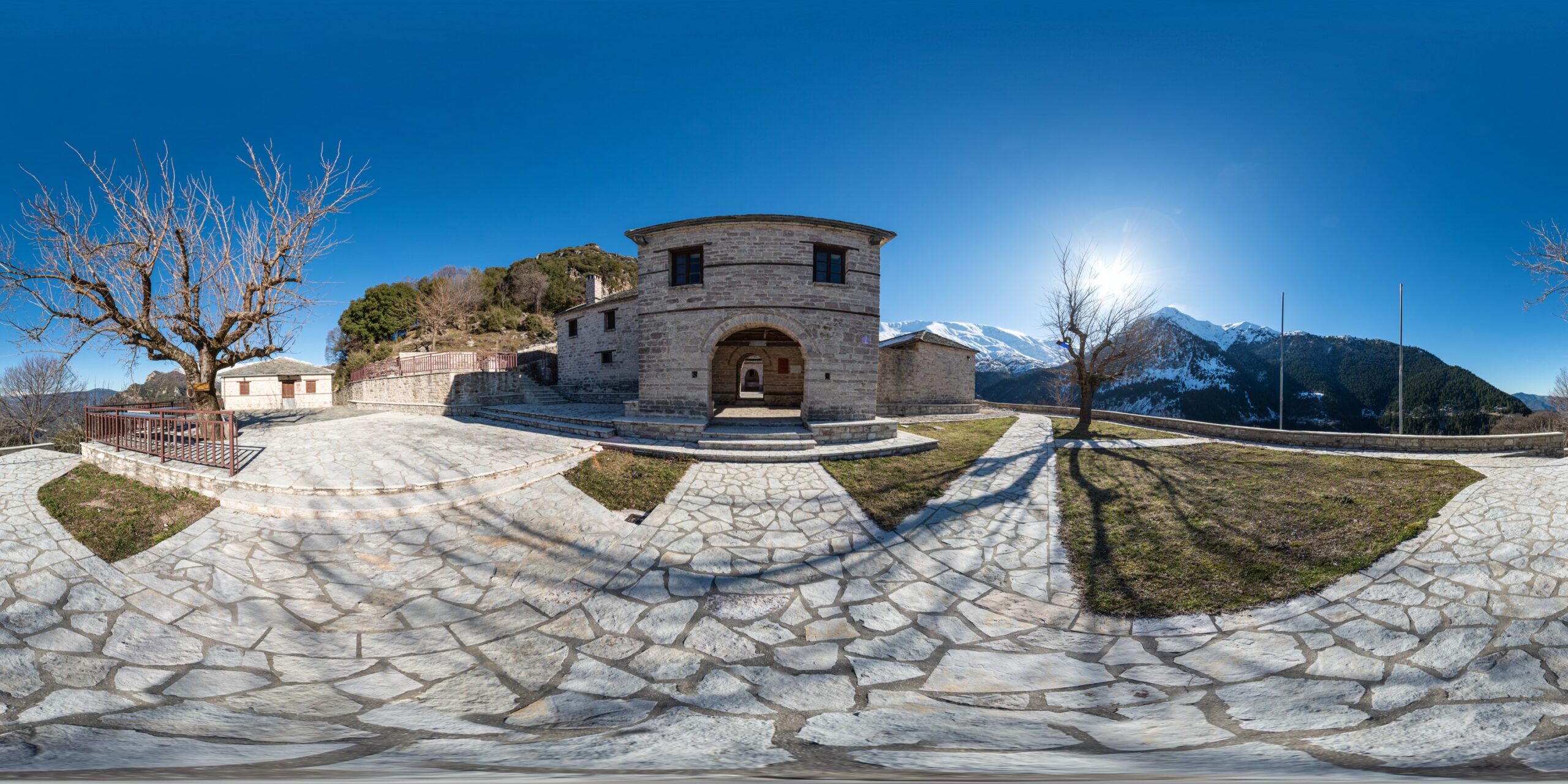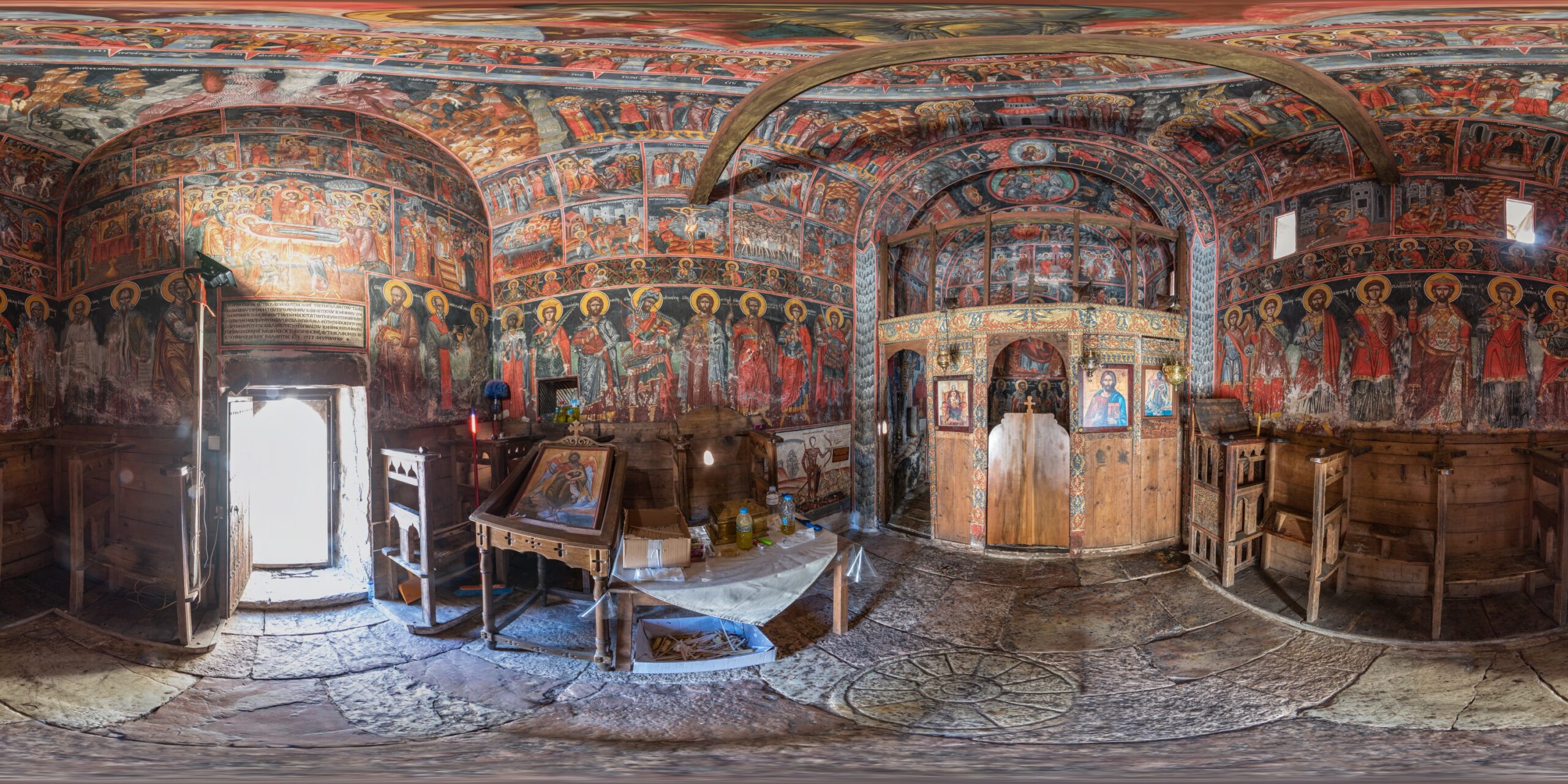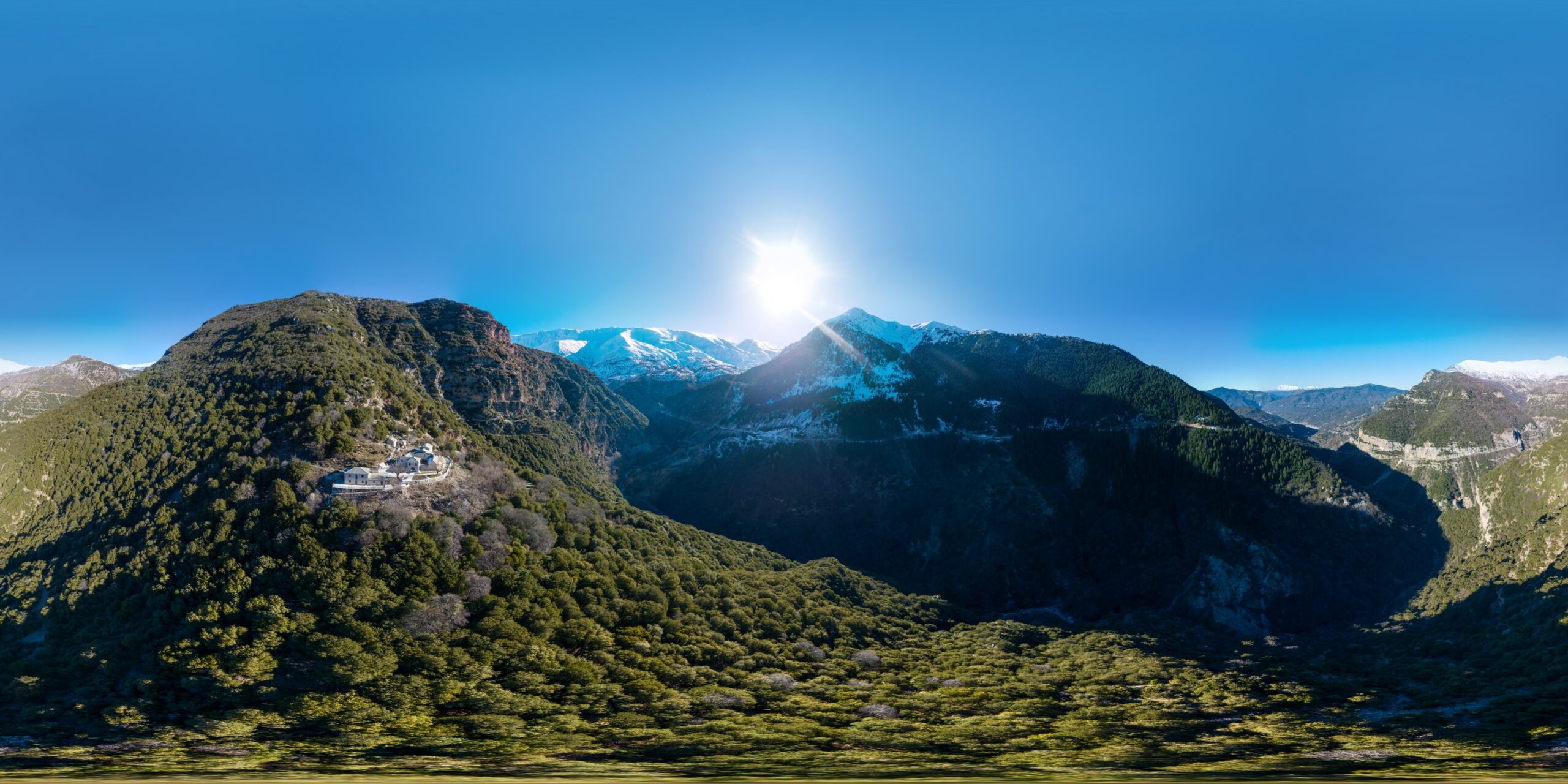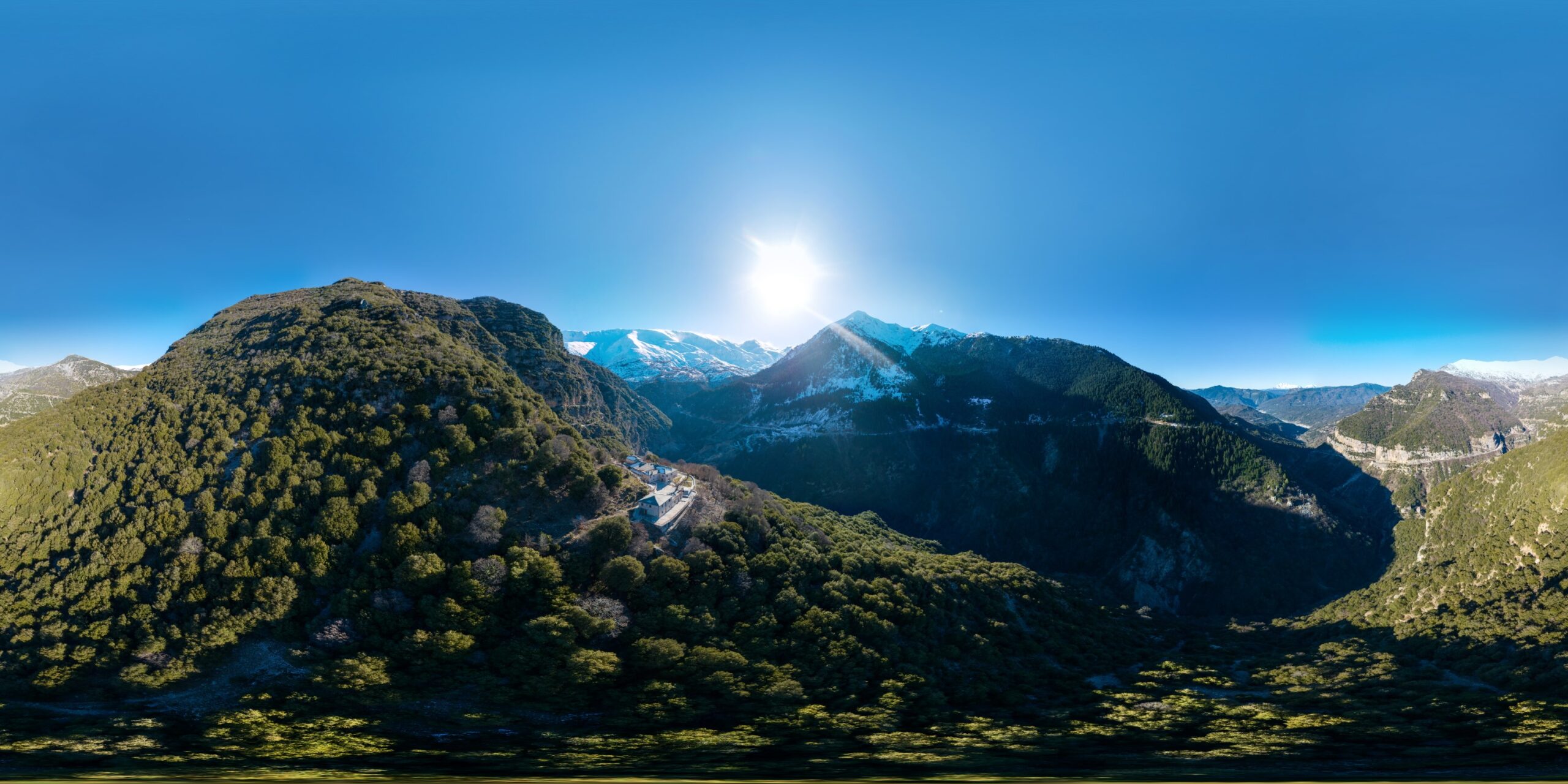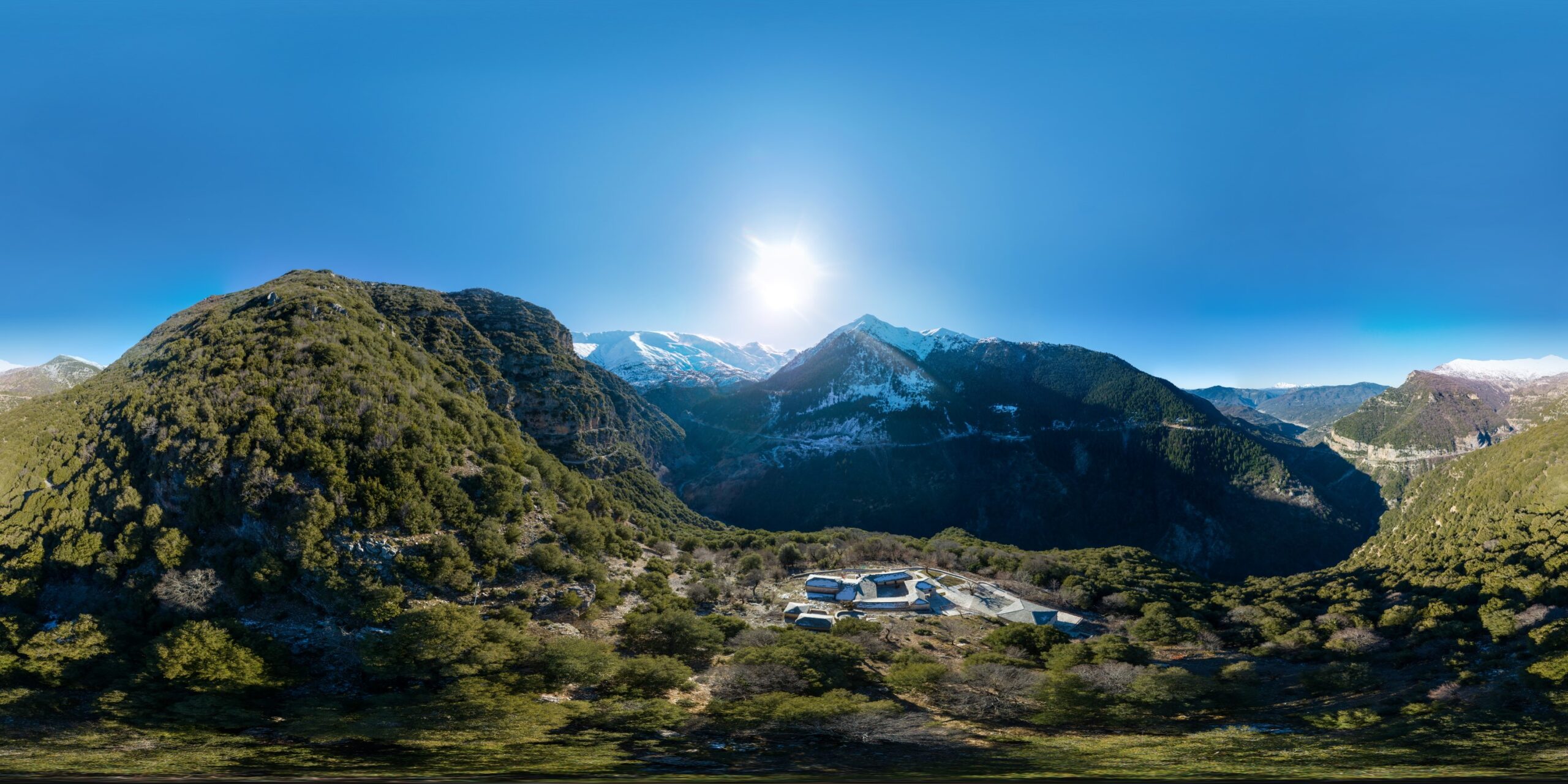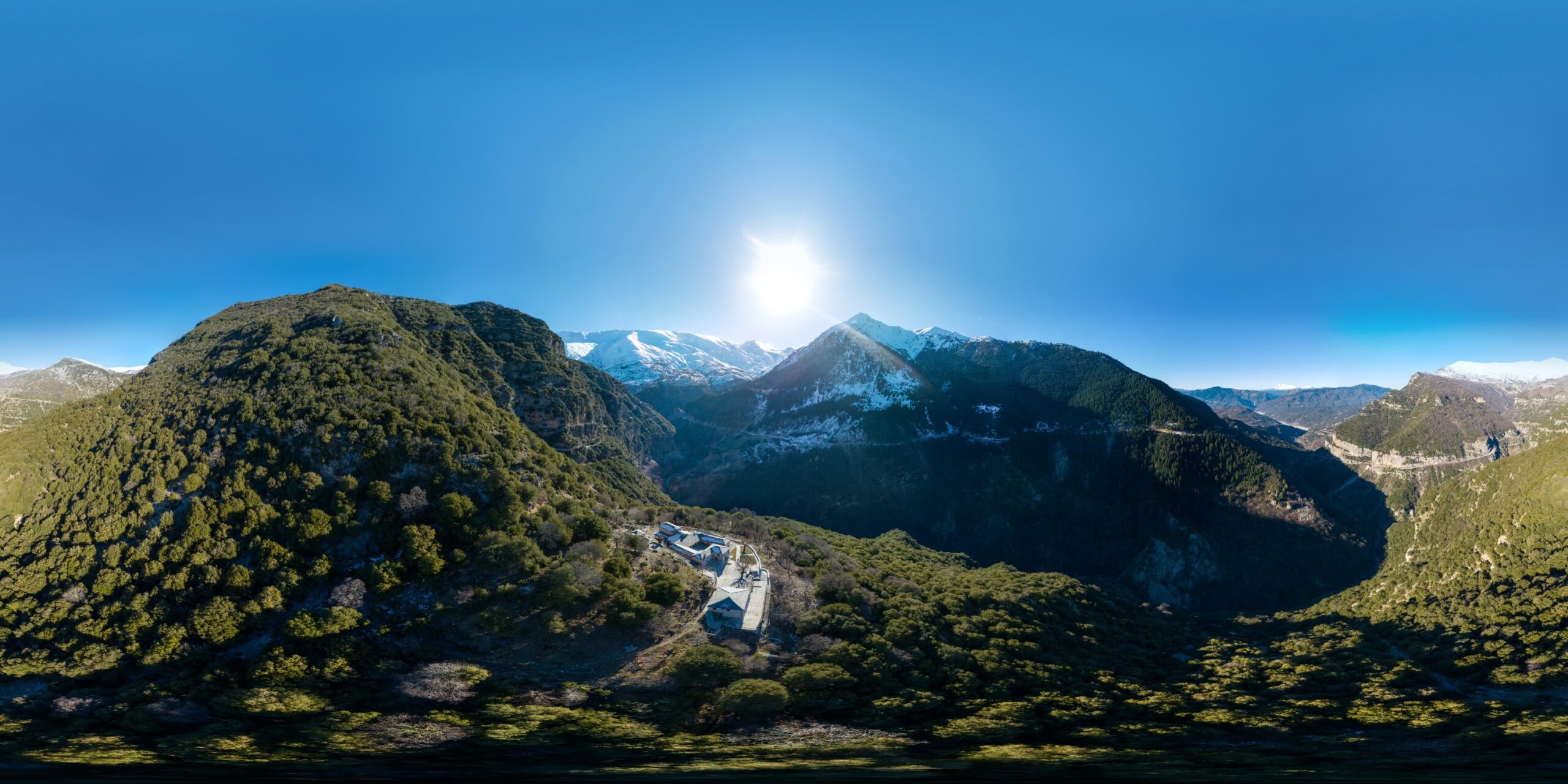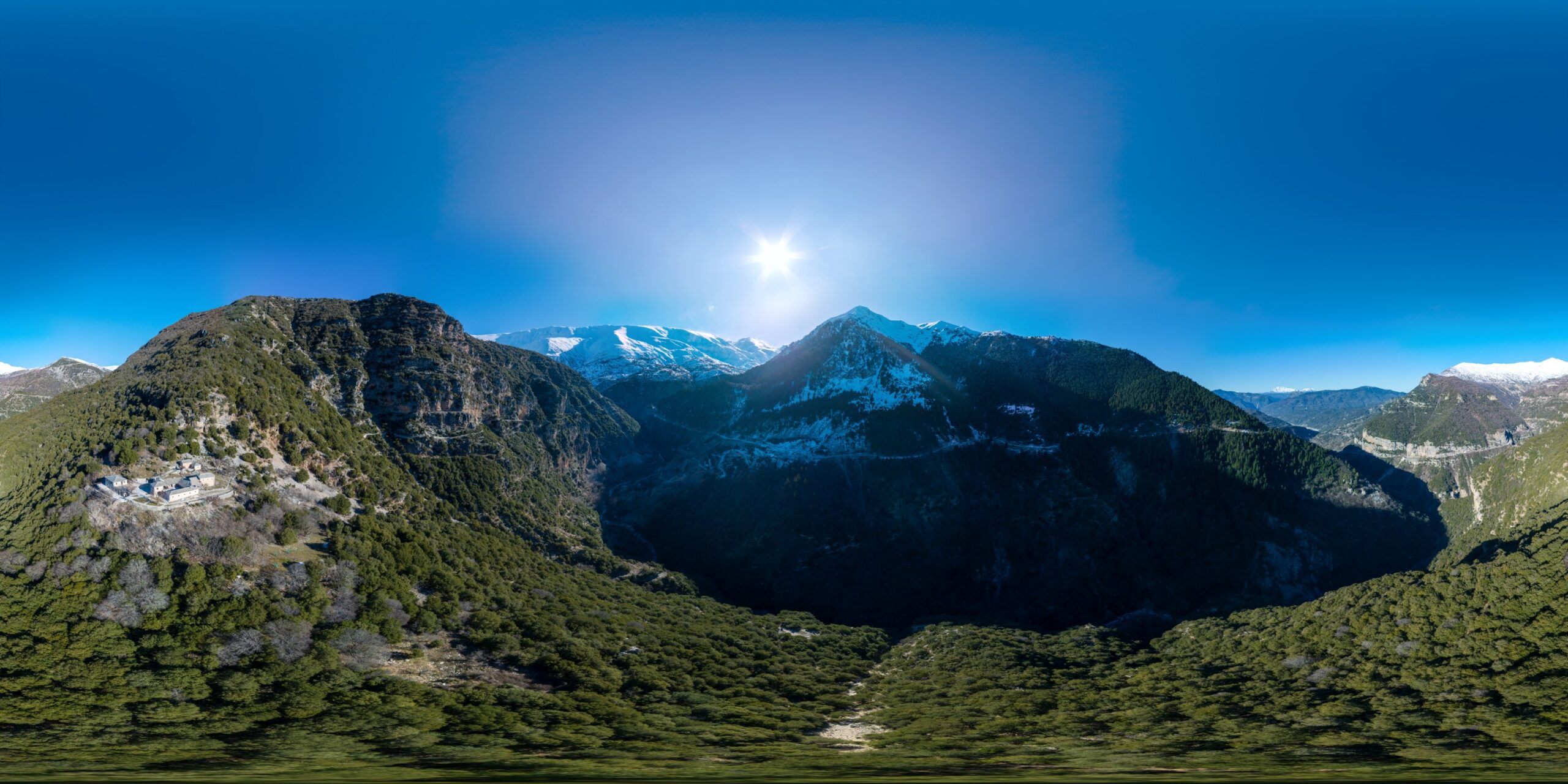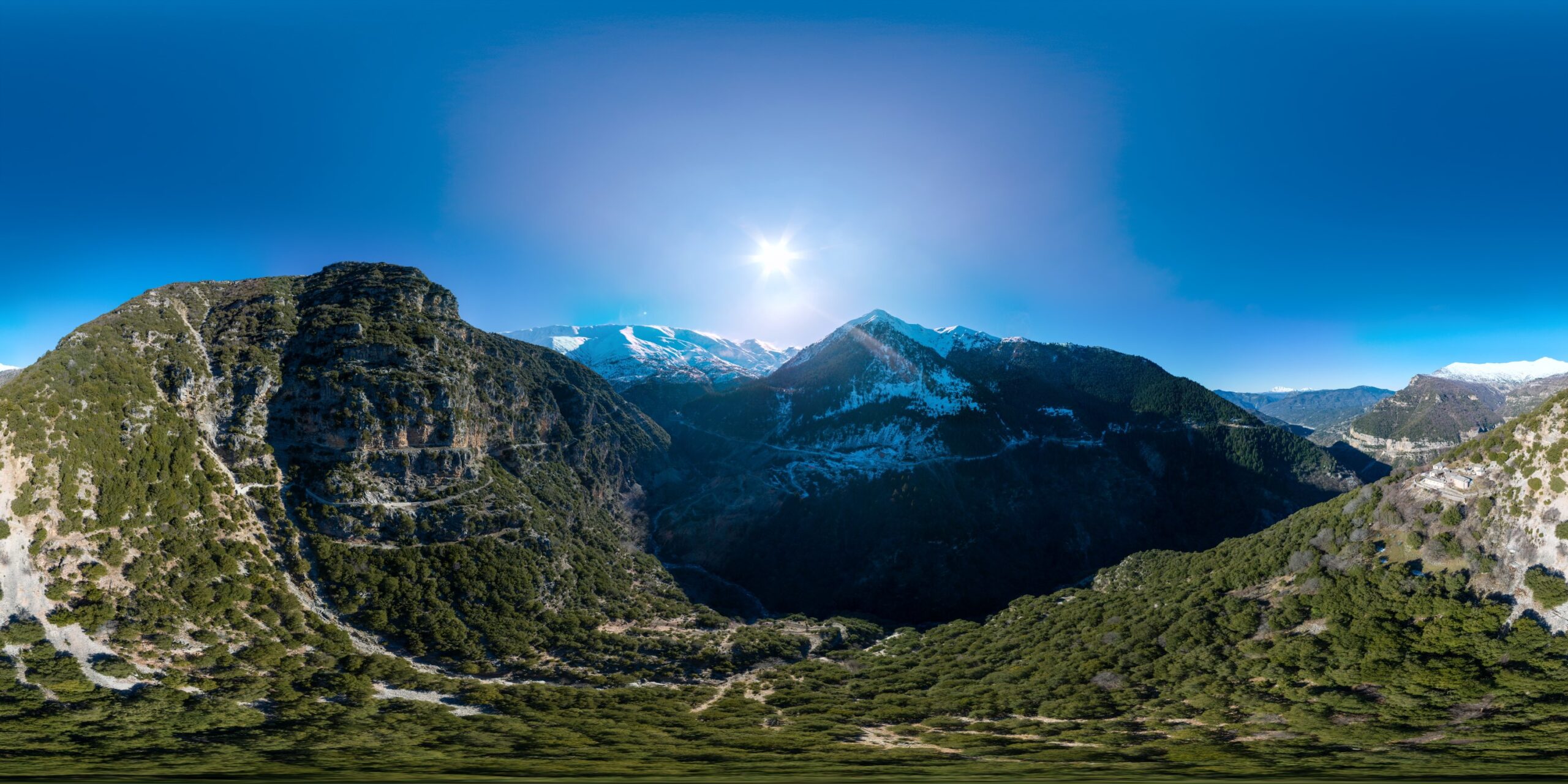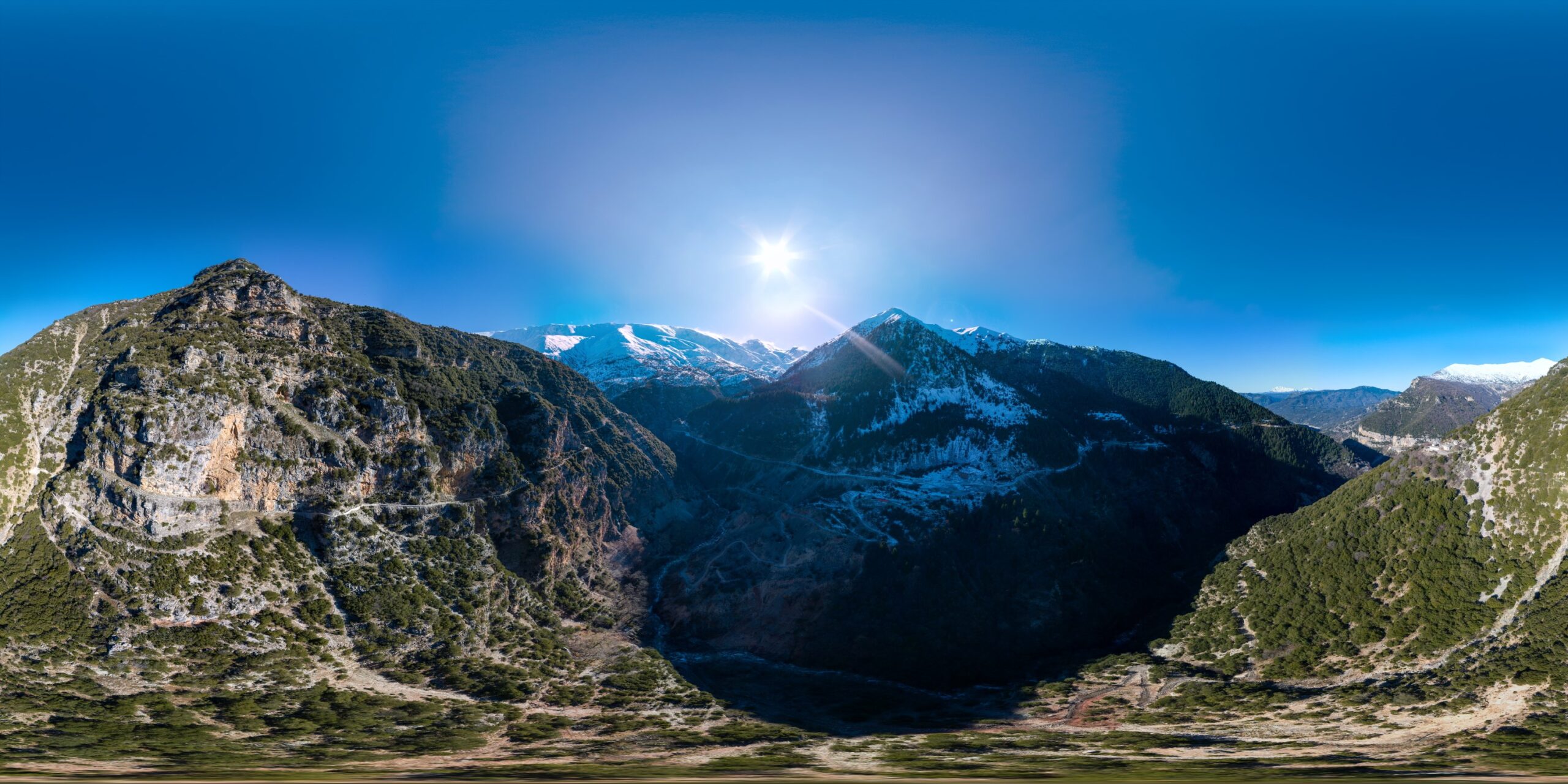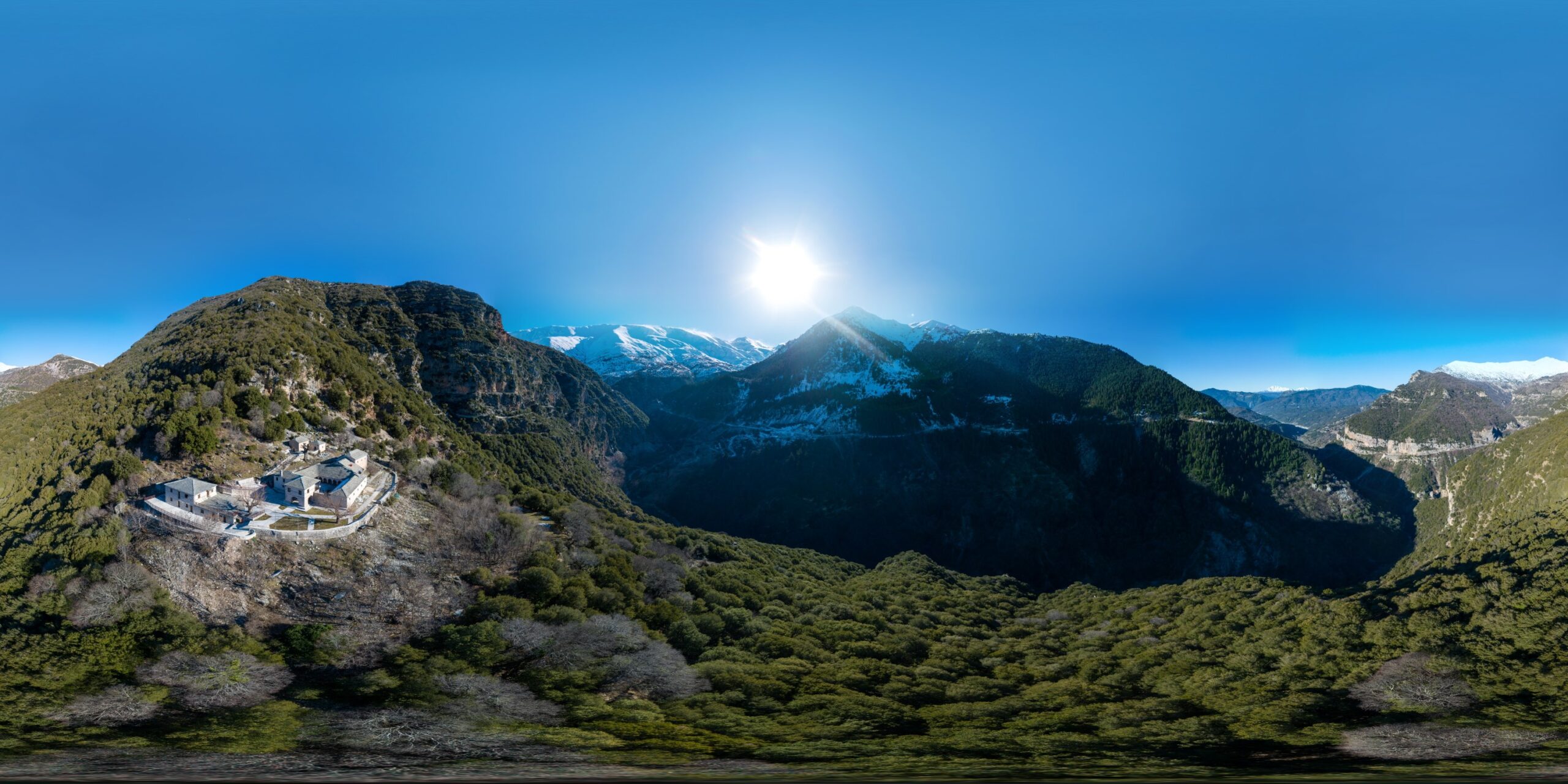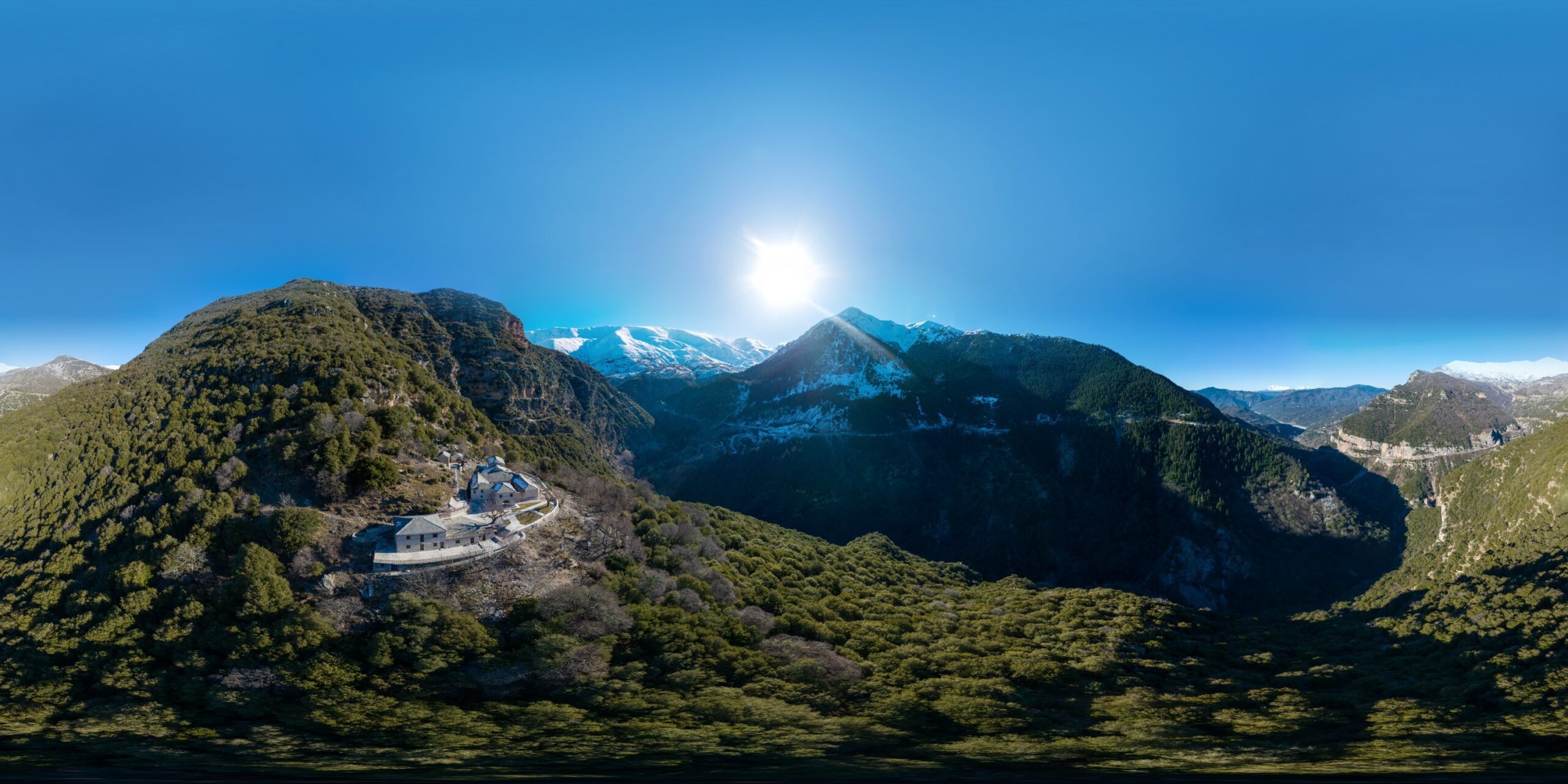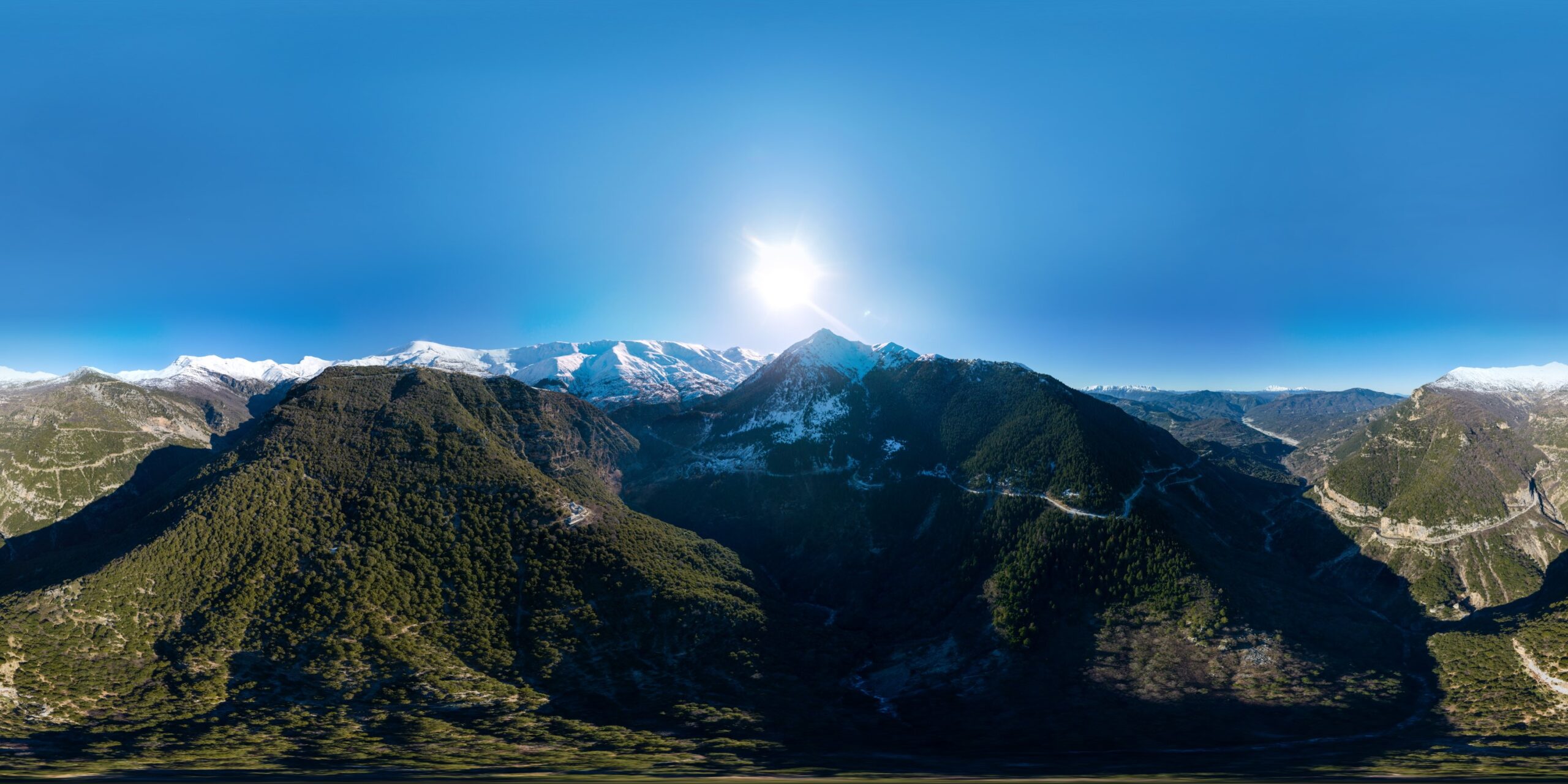A stone monastery looming at an altitude of 1000 metres in North Tzoumerka. According to tradition it was built in the 11th century. The oldest written evidence of Vyliza, however, is the icon of St. John the Baptist, recording the year 1676. The unique Holy Monastery of Vyliza, dedicated to the Annunciation of Mother Mary, […]
A stone monastery looming at an altitude of 1000 metres in North Tzoumerka. According to tradition it was built in the 11th century. The oldest written evidence of Vyliza, however, is the icon of St. John the Baptist, recording the year 1676. The unique Holy Monastery of Vyliza, dedicated to the Annunciation of Mother Mary, is situated between the villages of Kalarites and Matsuki, at the edge of the cliff, where three rivers can be heard flowing in the ravines below until they all flow into the Arachthos river.
Access to the Monastery is through the village of Matsouki. Visitors have to park at the village and walk a rough 1.5km footpath with steps to reach the Holy Monastery of Vyliza. The impressive feature along the ascent are the battlements along the monastery wall.
The Holy Monastery of Vyliza has played an important role in the history of Greece. Its rich library owns 14 manuscripts that are kept at the Greek National Library. The oldest manuscript is that from Iviron Monastery on Mt. Athos; it was written in 1350 and contains 1,100 pages. The monastery flourished because of the commercial value of animal husbandry products and wool, in particular.
The monastery architectural style is unusual. The building seen today is post-Byzantine. The Katholikon is a single-space church with a narthex that ends in a five-sided arch. The monastery was renovated in 1783 and still maintains several cells. In the monastery courtyard there is another church dedicated to St. John the Baptist. This second church is decorated with murals made in 1737 by blood-brothers Georgios and Stergios from the nearby village of Kalarites. There is also a gold-leaf wooden iconostasis with wonderful icons.
The monastery was deserted in 1893 and is well past its prime. Today it is a dependency of the Holy Monastery of Kato Panagia, Arta. Its restoration started in 1981. Although there are no monks, the monastery is always open and welcoming to pilgrims and visitors.


